Timothy McVeigh
description: American domestic anti-government terrorist (1968–2001)
80 results
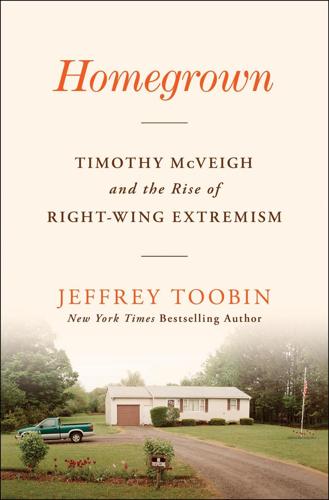
Homegrown: Timothy McVeigh and the Rise of Right-Wing Extremism
by
Jeffrey Toobin
Published 1 May 2023
McVeigh appeared to be a quietly competent soldier: For background on McVeigh’s military service, see Lou Michel and Dan Herbeck, American Terrorist: Timothy McVeigh & the Oklahoma City Bombing (New York: Regan Books, 2001), Chaps. 3–4; Brandon M. Stickney, All-American Monster: The Unauthorized Biography of Timothy McVeigh (Amherst, NY: Prometheus Books, 1996), Chap. 6; Jonathan Franklin, “Timothy McVeigh: Soldier,” Playboy, October 1995. Because Saddam Hussein had a history: Franklin, “Timothy McVeigh: Soldier,” p. 81. “Bad Company” would lead three other Bradleys: See Michel and Herbeck, American Terrorist, pp. 66–67. McVeigh was awarded four other medals: Michel and Herbeck, American Terrorist, p. 75.
…
Whenever Clinton appeared on the screen: Lou Michel and Dan Herbeck, American Terrorist: Timothy McVeigh & the Oklahoma City Bombing (New York: Regan Books, 2001), p. 180. “I’ll never see my dad again!”: Lana Padilla with Ron Delpit, By Blood Betrayed: My Life with Terry Nichols and Timothy McVeigh (New York: Harper Paperbacks, 1995), pp. 10–11. In a Walmart plastic bag: Jon Hersley, Larry Tongate, and Bob Burke, Simple Truths: The Real Story of the Oklahoma City Bombing Investigation (Oklahoma City: Oklahoma Heritage Association, 2004), pp. 183–85. CHAPTER 10: THE FINAL DAYS “I won’t need any”: Lou Michel and Dan Herbeck, American Terrorist: Timothy McVeigh & the Oklahoma City Bombing (New York: Regan Books, 2001), pp. 209–11.
…
The prosecutors argued that any prejudice against McVeigh could be cured by a jury instruction from Matsch, but the judge argued that would not be enough. “Timothy McVeigh will be profoundly prejudiced by a joint trial of this case,” Matsch said in his opinion. “His lawyers cannot question Terry Nichols or cross-examine the FBI agents on what they say Terry Nichols said and they cannot control the cross-examination by Terry Nichols or follow up on any suggestions or inferences of guilt of Timothy McVeigh resulting from it.” The prosecutors were shocked—and shattered—by Matsch’s ruling. The reasons were mostly personal. The government’s lawyers had put their lives on hold to travel first to Oklahoma City and then to Denver to try the case.

Waco Rising: David Koresh, the FBI, and the Birth of America's Modern Militias
by
Kevin Cook
Published 30 Jan 2023
When a Koresh supporter dragged a large wooden cross toward a checkpoint nearby, federal agents blocked her way. She planted the cross in muddy ground beside the road and disappeared in the crowd. Later in March, a young Gulf War veteran joined a T-shirt Hill throng that ranged from several hundred to more than three thousand tourists in a day. Timothy McVeigh, a long-faced twenty-four-year-old with a buzzcut, was selling five-dollar bumper stickers reading, FEAR THE GOVT THAT FEARS YOUR GUN and A MAN WITH A GUN IS A CITIZEN, A MAN WITHOUT A GUN IS A SUBJECT. Hearing news reports about the siege, McVeigh had driven from Florida to support the Davidians.
…
If that ever happened, the reborn prophet would walk past an elaborate memorial someone had placed in the grass just outside the perimeter fence: a small wooden cross adorned with colorful ribbons, a Dr Pepper bottle holding a chrysanthemum, Koresh’s 1988 mug shot, and a hand-lettered sign reading, THEY WILL NOT FIND DAVID’S BONES! HE IS ALIVE! Other followers took up the cause in their own ways. Timothy McVeigh had spent the middle of April at his friend Terry Nichols’s family farm in Michigan, planning a second trip to Waco to support Koresh and the Davidians. “There should be ten thousand people shouting at the FBI, ‘Go home! Go home!’” he said. Former sergeant McVeigh had been flat on his back in Nichols’s garage at noon on April 19.
…
On April 19, 2000, he hurried toward a TV news crew outside the new church. “What happened here was wrong!” he bellowed. “They murdered all the children.” It was “proven,” Jones said, that the FBI had “machine-gunned men, women, and children as they tried to exit” the burning compound. What was more, it was “proven” that Timothy McVeigh was not responsible for the Oklahoma City bombing on Waco’s second anniversary. Bill Clinton was. The destruction of the Murrah Federal Building “was an inside job—a false-flag operation” coordinated by Bill and Hillary Clinton. Asked about the victims of the Oklahoma bombing, Jones said he felt “horribly sad” for the office workers and preschoolers who died that day.

Waco: David Koresh, the Branch Davidians, and A Legacy of Rage
by
Jeff Guinn
Published 24 Jan 2023
Some shirts and bumper stickers touted militia groups, many of which seized on the events at Mount Carmel to claim the government illegally attacked gun owners acting well within their Second Amendment rights to bear arms. One of these peddlers was Timothy McVeigh, who would soon become infamous in his own right. FBI analyst Farris Rookstool remembers, “I drove out [to Mount Carmel], and saw this guy sitting on the hood of his car. He was selling bumper stickers, T-shirts, items that were very antigovernment. We know it was Timothy McVeigh, because someone from the SMU [Southern Methodist University] school paper took his picture and got his information. Two years later, McVeigh did what he did in Oklahoma City
…
It fits everything we know about what David and his followers believed. Clive Doyle recalls Wayne Martin: Doyle, pp. 150–54. One muttered, “Holy shit!”: 106th Congress, 2nd Session, House Report 106-1037, “The Tragedy at Waco: New Evidence Examined,” Committee on Government Reform (December 28, 2000). Timothy McVeigh, watching on television: Lou Michel and Dan Herbeck, American Terrorist: Timothy McVeigh & the Tragedy at Oklahoma City, p. 161. People began appearing at different places on the roof: Major Case 80—WACMUR, Updated Event Log; Clive Doyle and David Thibodeau interviews. It was 12:34 p.m.: Wessinger, How the Millennium Comes Violently, p. 78.
…
Kathy Schroeder, in custody at a Waco hospital, was told by a nurse to come and see what was happening on TV. She watched Mount Carmel burn, and says nearly thirty years later, “Those that died in fire attained a place in the future event [End Time]. They’re coming back. While the rest of my friends became Wave Sheaf and translated through fire, I was left behind.” Antigovernment militiaman Timothy McVeigh, watching on television from a farm in Michigan, gaped at the screen and blurted to like-minded friends sitting next to him, “What is this? What has America become?” * * * At 12:12 p.m., Byron Sage pleaded over the PA, “David, don’t put those people through this. Don’t lose control. Lead them to safety.
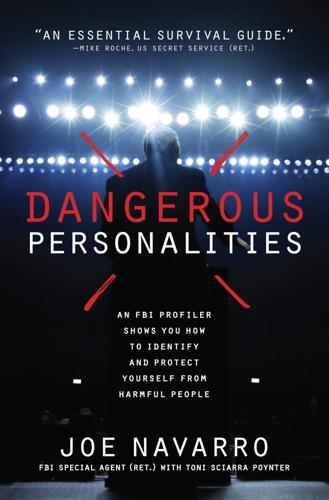
Dangerous Personalities: An FBI Profiler Shows You How to Identify and Protect Yourself From Harmful People
by
Joe Navarro
and
Toni Sciarra Poynter
Published 6 Oct 2014
These are the dangerous ones who seek like-minded “true believers,” as Eric Hoffer warned us in his landmark book on mass movements and totalitarian governments.2 They join the KKK, the skinheads, Aryan Nations, and any other extremist group that seeks to hate and do away with others because passionate hatred and fear give purpose and meaning to an otherwise unfulfilled life.3 Or they hook up with just one other like-minded paranoid personality for support in doing harm. This is what happened with the 2013 Boston Marathon bombers—the Tsarnaev brothers. Similarly, Timothy McVeigh joined forces with Terry Nichols, a fellow like-minded personality, to blow up the Alfred P. Murrah Federal Building in Oklahoma. And when they cannot find anyone with whom to commiserate, they act alone, like Anders Behring Breivik, the right-wing extremist who feared the influx of minorities in Norway, so he went out and massacred 77 souls, mostly children, in Norway in 2011.4 The paranoid personality spectrum, as you can see, is broad and ranges from irritating and obnoxious to extremely flammable and dangerous, but to one degree or another, these people share defining characteristics.
…
Such is the mind of the paranoid personality—skewed, rigid, moralistic, or unyielding—where murder is justified to save the unborn. This personality tends to know a lot about very little, fixating on a narrow idea—a passage of the Bible, or a legal, social, or political issue that may be of little or no consequence to most of us. Timothy McVeigh focused on the militarization of police SWAT teams in the 1990s. He didn’t like their military-style tactics targeting reclusive Randy Weaver and his family at Ruby Ridge in northern Idaho in 1992. For his beliefs and for his hatred of the federal government in general, he blew up the Alfred P.
…
For many of these paranoid personalities, violence becomes the solution because nothing else will achieve their out-of-bounds aims or do so fast enough for them. So you get “magical thinking” that goes something like this: If I kill enough scientists, I’ll stop the advance of technology. —“Unabomber” Ted Kaczynski, who mailed 16 bombs, killing 3 and wounding 23 If I blow up a building, I’ll stop the FBI and do away with SWAT teams. —Timothy McVeigh, bomber of the Alfred P. Murrah Federal Building in Oklahoma City, killing 168 women and children and injuring hundreds If I set off a bomb at the Atlanta Olympics, then abortions in America will cease to be performed. —Eric Rudolph, Olympic Park bomber, 1996, Atlanta If I kill enough Americans, the United States will leave the Middle East.
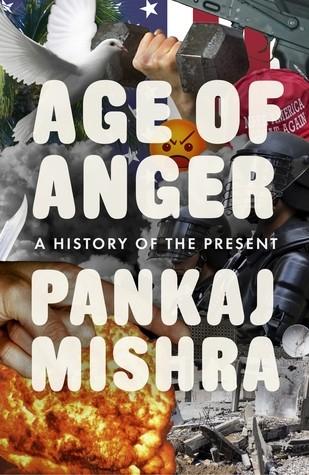
Age of Anger: A History of the Present
by
Pankaj Mishra
Published 26 Jan 2017
The wars in Chechnya, Afghanistan, Africa and South America in the 1990s revealed large numbers of individuals, armed gangs, arms dealers, human traffickers, drug lords, mafias and private security firms snatching the monopoly of violence from flailing states – precursors to the twenty-first century’s terrorists and ‘lone wolves’ who would erase the fading distinction between civilian and military. The easy availability of assault weapons in the United States was always likely to assist the privatization and socialization of violence. Timothy McVeigh’s murder on 19 April 1995 of 168 Americans in Oklahoma City now seems an early clue to the presently exploding netherworld of political rage, conspiracy theory and paranoia. Writing in a small-town newspaper in 1992, McVeigh, then a young veteran of the First Gulf War, chillingly foresaw our demagogic present: Racism on the rise?
…
Bland fanatics, sedulously polishing the image of a ‘liberal’ West against totalitarianism and Islam, have banished it to obscurity. This is usually done through a combination of reductionist history and ahistorical explanations, largely involving clinical psychology. Thus, politicians and journalists routinely describe the domestic terrorist as a deranged ‘lone wolf’, even when, as with Timothy McVeigh, and many other anti-government militants in the United States, he explicitly articulated a point of view – anti-governmentalism – that mirrors mainstream ideas and ideologies. McVeigh claimed to be defending the American constitution, and on the day of his atrocity in 1995 in Oklahoma City he wore a T-shirt bearing a quotation from Thomas Jefferson: ‘The tree of liberty must be refreshed from time to time with the blood of patriots and tyrants.’
…
It is true to say that the glory of man is his capacity for salvation; it is also true that his glory is his capacity for damnation. The worst that can be said of most of our malefactors, from statesmen to thieves, is that they are not men enough to be damned. T. S. Eliot (1930) The Lone Wolf and His Pack On the morning of 19 April 1995, Timothy McVeigh drove a Ryder rental truck to the front of the Alfred P. Murrah Federal Building in Oklahoma City. He had already lit two fuses, of five and two minutes each. Leaving the truck just below a day-care centre in the building he walked away as a large explosion behind him destroyed the north half of the building, killing 168 people, including 19 children, and injuring 684 others.

Nothing to Hide: The False Tradeoff Between Privacy and Security
by
Daniel J. Solove
Published 28 Jun 2011
Why was his crime deemed a national-security issue while the Columbine rampage wasn’t? The line between national-security and regular criminal activities is quite blurry. What about the Beltway snipers of 2002, who terrorized people in Maryland, Virginia, and the District of Columbia? What about Timothy McVeigh, the man who bombed the Alfred P. Murrah Federal Building in Oklahoma City, killing 168 people? Are these regular crimes? Or matters of national security? Is there a meaningful difference? How should national-security threats be distinguished from other crimes? One way is to focus on the number of potential victims, with matters of national security involving a larger number of casualties than ordinary crime.
…
He received a Ph.D. in math from Michigan, and then became a professor at Berkeley. He later quit the professorship and moved to a cabin in the woods. He enjoyed reading history books, riding his bike, and gardening.13 “John” is Mohammed Atta, the ringleader of the September 11 attacks. “Matt” is Timothy McVeigh, who bombed the Alfred P. Murrah Federal Building in Oklahoma City in 1995, killing 168 people. “Bill” is Theodore Kaczynski, the Unabomber, who mailed bombs to people for a period of nearly twenty years. These three individuals had very different backgrounds and beliefs. Atta had radicalized Islamic beliefs, McVeigh was an agnostic who believed the power of the U.S. government was running amok, and Kaczynski was an atheist who hated modern technology and industry.
…
Posner, Not a Suicide Pact, supra, at 97. 11. Terry McDermott, Perfect Soldiers: The 9/11 Hijackers: Who They Were, Why They Did It (2005); Peter Finn, A Fanatic’s Quiet Path to Terror: Rage Was Born in Egypt, Nurtured in Germany, Inflicted on U.S., Wash. Post, Sept. 22, 2001, at A1. 12. Profile: Timothy McVeigh, BBC News, May 11, 2001, http://news.bbc. co.uk/2/hi/1321244.stm (last visited Aug. 17, 2010). 13. John Schwartz & Serge F. Kovaleski, Bookish Recluse Lived Sparse Cabin Existence, Wash. Post, Apr. 4, 1996, at A1. 233 Notes to pages 188–200 14. See Fred H. Cate, Government Data Mining: The Need for a Legal Framework, 43 Harv.

Culture Warlords: My Journey Into the Dark Web of White Supremacy
by
Talia Lavin
Published 14 Jul 2020
On June 17, 2019, they celebrated the anniversary of “Saint Roof’s” murders, and punctuated it with a kind of prayer litany of white-supremacist murder: Heil Hitler. Heil Bowers [Robert Bowers, who allegedly murdered eleven Jews in a Pittsburgh synagogue in 2018]. Sieg Heil. Heil Roof. Heil Breivik [Anders Breivik, a Norwegian neo-Nazi who murdered seventy-seven in a massive terror attack in 2011]. Heil McVeigh [Timothy McVeigh, the 1995 Oklahoma City bomber]. There was no one to de-escalate these men; it was a private group, one that existed for them to egg one another on, to venerate mass murderers and perhaps one day to emulate them. And over and over again, they posted my selfies, a photo of my feet, an old Google result about my dismal performance on the game show Jeopardy!
…
The Turner Diaries would go on to inspire a white-supremacist terrorist gang called the Order, directly named after the group in the book, to rob banks and armored cars, and ultimately shoot to death Jewish radio host Alan Berg in Colorado in 1984. Most famously, the book was the ideological lodestar of mass murderer Timothy McVeigh, who bombed the Alfred P. Murrah Federal Building in 1995, killing 168 people, including children. The FBI has labeled it the “Bible of the racist right.” If so, a devotee of the Turner Diaries subsequently produced the movement’s catechism. David Lane, a member of the terror cell the Order, wrote a tract while imprisoned for Berg’s murder that came to be known as the “white genocide manifesto”—echoing alarms about white “racial suicide” dating back to the era of eugenics.
…
For diehard white supremacists, feminism—with its birth control, its careerist women, and its ethos of sexual choice for women—represents an existential threat to the future of the white race. As the white-supremacist murderer Brenton Tarrant expressed in his manifesto prior to shooting over fifty Muslims at prayer in Christchurch, New Zealand: “It’s the birthrates.” The Turner Diaries, the 1978 novel by neo-Nazi William Luther Pierce that served as a direct inspiration for Timothy McVeigh and other white-supremacist terrorists, lays out this antipathy to feminism succinctly: “‘Women’s lib’ was a form of mass psychosis,” Pierce wrote. “Women affected by it denied their femininity and insisted that they were ‘people,’ not ‘women.’ This aberration was promoted and encouraged by the System as a means of dividing our race against itself.”
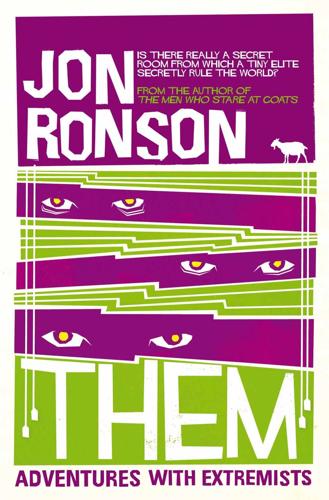
Them: Adventures With Extremists
by
Jon Ronson
Published 1 Jan 2001
Whatever, six days into Randy Weaver’s trial, fifty-three adults, including David Koresh, and twenty-three children were burnt to death at Mount Carmel in Waco. The remains of the Weaver cabin became a place of pilgrimage for this new army of believers in the secret rulers of the world. One of the pilgrims was Timothy McVeigh who visited Randy Weaver’s cabin, alone, some months before blowing up the Alfred P. Murrah Building in Oklahoma City, and killing 168 people. McVeigh considered the Murrah Building to be local New World Order headquarters. ONE OUT OF EIGHT AMERICANS HAS HARD-CORE ANTI-SEMITIC FEELINGS This quarter-page advertisement occupied the front page of the New York Times a few weeks after I visited Jack McLamb.
…
But then many Klanspeople began to desert him for more outspoken neo-Nazi leaders – leaders of rival Klan groups and organizations such as White Aryan Resistance – fearsome men who cared nothing about negative connotations. And some Klansmen were going it alone: they called it Leaderless Resistance. Timothy McVeigh, the Oklahoma bomber, was a one-time member of Thom’s Klan who became disenchanted with the image makeover and decided to go it alone. The truth was many Klanspeople felt that without hatred there was no point in even having a Ku Klux Klan. Hate, they contended, was a pivotal Klan activity. Furthermore, across America, Klan membership had fallen to an all-time low.
…
The Iraqi government announced in November 2000 that the vote-rigging scandal that convulsed the American elections in Florida was all part of the great Bilderberg Jewish conspiracy to get their man, Al Gore, into power. Other conspiracy theorists contended that this could not be true because George W. Bush was himself a regular attendee at Bohemian Grove and must, therefore, also be part of the conspiracy. I thought about Timothy McVeigh visiting the remains of Randy Weaver’s cabin and rummaging through the family’s scattered belongings, like an archaeologist, or a pilgrim, shortly before blowing up the federal building in Oklahoma City – a building he considered to be the local headquarters of the global elite. I realized just how central these conspiracy theories were to the practice of terrorism in the Western world.
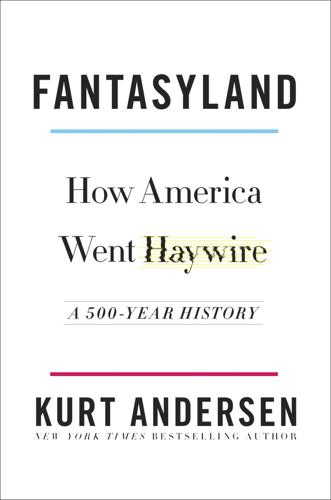
Fantasyland: How America Went Haywire: A 500-Year History
by
Kurt Andersen
Published 4 Sep 2017
And a year later right there in Oklahoma City, a couple of miles from where the state legislature had declared its opposition to a liberty-quashing New World Order, that young bumper-sticker salesman from Waco detonated a truck bomb that destroyed the city’s main federal office building and killed 168 people. One response was to consider Timothy McVeigh a hero, a John Brown for his time; the more common public conclusion of his fellow travelers was to imagine he’d been a patsy of the government, which had surely staged the bombing in order to justify a crackdown on patriots.*2 — FULL-TILT EXPLAIN-IT-ALL CONSPIRACISM was being mainstreamed in America.
…
.*4 * * * *1 Including those attended by the current U.S. secretary for housing and urban development. “I mean, Seventh-day Adventist,” President Trump said suspiciously of Ben Carson’s religion when they were rivals for the 2016 nomination. “I don’t know about, I just don’t know.” *2 Not long before he became famous, Timothy McVeigh traveled to gawk at the air force’s so-called Area 51 in Nevada, the place UFO conspiracists believe the government keeps extraterrestrials and their downed spacecraft, and on death row he watched the movie Contact. *3 1991 Wall Street Journal/NBC News survey. *4 Cheryl Costa and Linda Miller Costa, UFO Sightings Desk Reference (2017). 39 Mad as Hell, the New Voice of the People IN THE SUMMER OF 2001, six weeks before the 9/11 attacks, a twenty-seven-year-old national radio host warned his listeners to wake up, imploring and beseeching them.
…
Coming of age in the early 1990s, just as Communism ended and the era of Behold a Pale Horse and X-Files began, he was a natural omniconspiracist, a native fusion paranoiac. Long before Breitbart.com existed or Trump entered politics, Jones was ignoring the standard ideological lines to forge a confederacy of paranoids. JFK was “the last true president of the United States,” and Lee Harvey Oswald was a patsy—just like Timothy McVeigh. “The Establishment,” he has said, “they want to make it…right-wing versus left-wing.” Glenn Beck, for instance, “spins it in a neocon-ish way that reinforces the controlled, left-right paradigm that divides people.” Jones does consider the center-left more dangerous than the center-right—“the Democratic Party,” he told Farrakhan in 2016, has “got black people in their web murdering your people and they love it.”
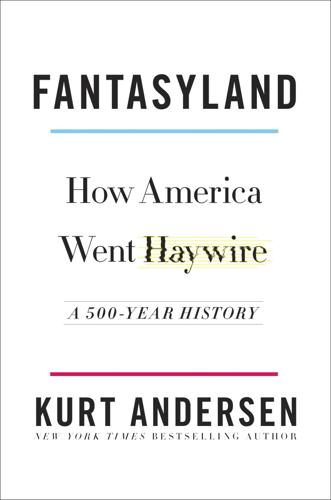
Fantasyland
by
Kurt Andersen
Published 5 Sep 2017
And a year later right there in Oklahoma City, a couple of miles from where the state legislature had declared its opposition to a liberty-quashing New World Order, that young bumper-sticker salesman from Waco detonated a truck bomb that destroyed the city’s main federal office building and killed 168 people. One response was to consider Timothy McVeigh a hero, a John Brown for his time; the more common public conclusion of his fellow travelers was to imagine he’d been a patsy of the government, which had surely staged the bombing in order to justify a crackdown on patriots.*2 — FULL-TILT EXPLAIN-IT-ALL CONSPIRACISM was being mainstreamed in America.
…
.*4 * * * *1 Including those attended by the current U.S. secretary for housing and urban development. “I mean, Seventh-day Adventist,” President Trump said suspiciously of Ben Carson’s religion when they were rivals for the 2016 nomination. “I don’t know about, I just don’t know.” *2 Not long before he became famous, Timothy McVeigh traveled to gawk at the air force’s so-called Area 51 in Nevada, the place UFO conspiracists believe the government keeps extraterrestrials and their downed spacecraft, and on death row he watched the movie Contact. *3 1991 Wall Street Journal/NBC News survey. *4 Cheryl Costa and Linda Miller Costa, UFO Sightings Desk Reference (2017). 39 Mad as Hell, the New Voice of the People IN THE SUMMER OF 2001, six weeks before the 9/11 attacks, a twenty-seven-year-old national radio host warned his listeners to wake up, imploring and beseeching them.
…
Coming of age in the early 1990s, just as Communism ended and the era of Behold a Pale Horse and X-Files began, he was a natural omniconspiracist, a native fusion paranoiac. Long before Breitbart.com existed or Trump entered politics, Jones was ignoring the standard ideological lines to forge a confederacy of paranoids. JFK was “the last true president of the United States,” and Lee Harvey Oswald was a patsy—just like Timothy McVeigh. “The Establishment,” he has said, “they want to make it…right-wing versus left-wing.” Glenn Beck, for instance, “spins it in a neocon-ish way that reinforces the controlled, left-right paradigm that divides people.” Jones does consider the center-left more dangerous than the center-right—“the Democratic Party,” he told Farrakhan in 2016, has “got black people in their web murdering your people and they love it.”
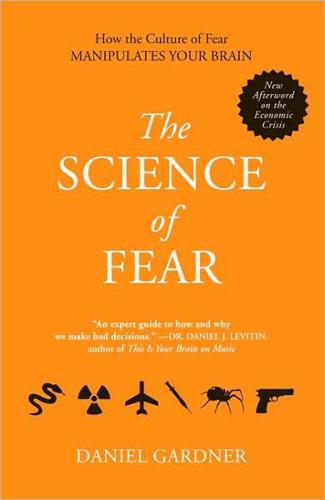
The Science of Fear: How the Culture of Fear Manipulates Your Brain
by
Daniel Gardner
Published 23 Jun 2009
But in 2006, that narrative was gathering dust, and so the incident was treated as a minor local story and ignored. Terrorism is obviously a major narrative today, as it has been for some time, but a decade ago it was quite different. The 1995 Oklahoma City bombing made terrorism the story of men like the bomber, Timothy McVeigh, a white, paranoid, antigovernment radical. Following that storyline, journalists churned out countless articles about tiny groups of cranky gun enthusiasts who grandly styled themselves “militias.” There wasn’t much evidence that the militias were a serious threat to public safety, but McVeigh had briefly belonged to one, so reporters flocked to cover their every word and deed.
…
The September 11 attacks scrapped this storyline and replaced it with the story of Islamist terrorism that is still going strong today—which is why, when a suicide bomber detonated himself outside a packed stadium at the University of Oklahoma on October 1, 2005, the media scarcely reported the incident. The bomber, Joel Henry Hinrichs III, wasn’t Muslim. He was a disturbed white guy with a thing for explosives whose initial plan was apparently to detonate a bomb identical to that used by Timothy McVeigh. If he had carried out his attack at the University of Oklahoma in the late 1990s, it would have been major news around the world, but in 2005 it didn’t fit the narrative so it, too, was treated as a minor local story and ignored. This happened again in April 2007, when six white men belonging to the “Alabama Free Militia” were arrested in Collinsville, Alabama.
…
It’s hard to imagine a worse scenario: A fanatical cult with a burning desire to inflict mass slaughter has heaps of money, international connections, excellent equipment and laboratories, scientists trained at top-flight universities, and years of near-total freedom to pursue its operations. And yet Aum’s seventeen attacks with chemical or biological weapons took far fewer lives than the 168 people who died in Oklahoma City when Timothy McVeigh detonated a single bomb made of fertilizer and motor-racing fuel. “Aum’s experience suggests—however counter-intuitively or contrary to popular belief—the significant technological difficulties faced by any non-state entity in attempting to weaponize and disseminate chemical and biological weapons effectively,” concluded the Gilmore Committee.

Zero-Sum Future: American Power in an Age of Anxiety
by
Gideon Rachman
Published 1 Feb 2011
Murrah Federal Building in Oklahoma City in 1994, which killed 168 people. Timothy McVeigh, the man who drove the truck bomb into the building, nurtured a fanatical hatred of the federal government. He was also a man who was fascinated by the idea of a “conspiracy between the United Nations and the United States to limit individual freedom and, ultimately, take over the world.”9 Until the attacks on New York and Washington in 2001, the Oklahoma bombing was the worst ever terrorist atrocity on American soil. The 9/11 bombers, in a strange way, represented the mirror image of the fears of the Oklahoma terrorist. While Timothy McVeigh was angered by the notion that a world government might be imposed on the United States, al-Qaeda saw an all-powerful United States imposing its will on the rest of the world.
…
Quoted in Legrain, Open World, 25. 6. Cited in William Greider, Come Home America: The Rise and Fall (and Redeeming Promise) of Our Country (New York: Rodale, 2009), 70. 7. Joseph Stiglitz, Globalization and Its Discontents (London: Penguin, 2002), 4. 8. Ibid., 21. 9. Lou Michel and Dan Herbeck, American Terrorist: Timothy McVeigh and the Oklahoma City Bombing (New York: ReganBooks, 2001), 59. 10. Martin Wolf, Why Globalization Works (New Haven, Conn.: Yale University Press, 2005), 9. 17. POWER: CHARLES KRAUTHAMMER AND THE NEOCONSERVATIVES 1. Charles Krauthammer, “The Unipolar Moment,” Foreign Affairs 70:1 (Winter 1990/91). 2.
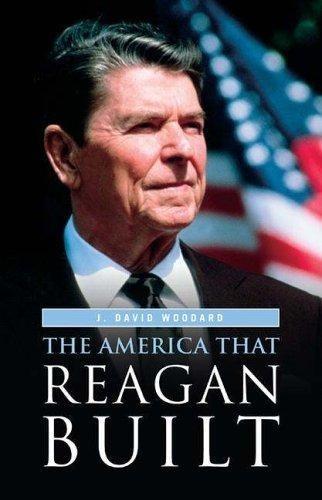
The America That Reagan Built
by
J. David Woodard
Published 15 Mar 2006
I turn and run, and the kids quit crying and I feel very guilty.’’41 When the smoke cleared, and the rescue workers went home, 168 people were dead, including nineteen children and one rescue worker. The bomb was in a rented Ryder truck, loaded with 5,000 pounds of ammonium nitrate, an agricultural fertilizer, and nitromethane, a highly volatile motor-racing fuel.42 Just ninety minutes after the explosion, an Oklahoma Highway Patrol officer pulled over twenty-seven-year-old Timothy McVeigh for driving without a license plate. Shortly before McVeigh was to be released on the minor offense, he was identified as the bombing suspect by law enforcement authorities and charged with the crime. With the announcement of the arrest, the country had to face the fact of terrorism within, as well as from abroad; from citizens, and not just from foreigners.
…
The abiding question remained: Why? McVeigh was a military veteran, and had no prior record of arrest. In dramatic testimony in his subsequent trial, McVeigh’s sister, Jennifer, calmly told jurors about her brother’s rage against the government for the 1993 siege of the Branch Davidians in Waco, Texas.43 Timothy McVeigh decided to extract retribution on those he felt responsible— the Murrah Federal Building held numerous federal agency offices, including Alcohol, Tobacco, and Firearms (ATF). In planning his revenge on the second anniversary of the Waco tragedy, McVeigh enlisted the help of his friend, Terry Nichols, to help him pull off his plan.
…
The site was given over to a reflecting pool book ended by two large symbolic ‘‘doorways,’’ with a field full of bronze and stone chairs—one for each person lost, including children, and arranged based on what floor they were on when the bomb exploded. On a corner adjacent to the memorial a sculpture was erected by St. Joseph’s Catholic Church, one of the first brick-and-mortar churches in the city. It too was almost totally destroyed by the blast. Timothy McVeigh was a disgruntled American who wanted revenge on those he resented. He was not alone. On April 3, 1996, a family member gave a tip to the FBI that ended the longest and costliest manhunt for a serial killer in U.S. history.47 After seventeen years of anonymity, the ‘‘Unabomber’’ was exposed The Postmodern Nineties 179 by his younger brother.
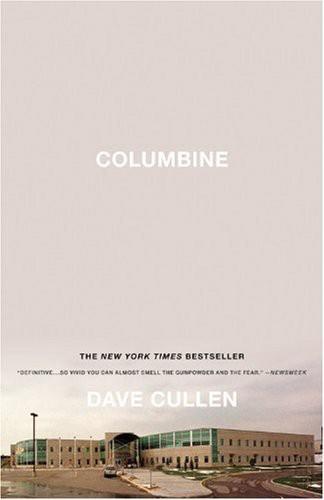
Columbine
by
Dave Cullen
Published 3 Mar 2010
He was the last person known to speak to Davidian leader David Koresh. He watched the compound burn. Speculation raged about the FBI’s role in the blaze. The controversy nearly ended Attorney General Janet Reno’s career. Waco radicalized the anti-government militia movement, made April 19 into a symbol of perverse authority. Timothy McVeigh sought vengeance by bombing the Murrah Federal Building in Oklahoma City on April 19, 1995. His explosion killed 168 people, the largest terrorist attack in American history to that point. 8. Maximum Human Density It’s a safe bet that Eric and Dylan watched the carnage of Waco and Oklahoma City on television, with the rest of the country.
…
Sociology professor Mark Juergensmeyer identified the central characteristic of terrorism as “performance violence.” Terrorists design events “to be spectacular in their viciousness and awesome in their destructive power. Such instances of exaggerated violence are constructed events: they are mind-numbing, mesmerizing theater.” The audience—for Timothy McVeigh, Eric Harris, or the Palestine Liberation Organization—was always miles away, watching on TV. Terrorists rarely settle for just shooting; that limits the damage to individuals. They prefer to blow up things—buildings, usually, and the smart ones choose carefully. “During that brief dramatic moment when a terrorist act levels a building or damages some entity that a society regards as central to its existence, the perpetrators of the act assert that they—and not the secular government—have ultimate control over that entity and its centrality,” Juergensmeyer wrote.
…
“A coffeehouse is not the World Trade Center,” he explained. Most terrorists target symbols of the system they abhor—generally, iconic government buildings. Eric followed the same logic. He understood that the cornerstone of his plan was the explosives. When all his bombs fizzled, everything about his attack was misread. He didn’t just fail to top Timothy McVeigh’s record—he wasn’t even recognized for trying. He was never categorized with his peer group. We lumped him in with the pathetic loners who shot people. Eric miscalculated again. It was about drinking this time. He and Dylan talked a friend’s mom into buying lots of liquor. She took requests.
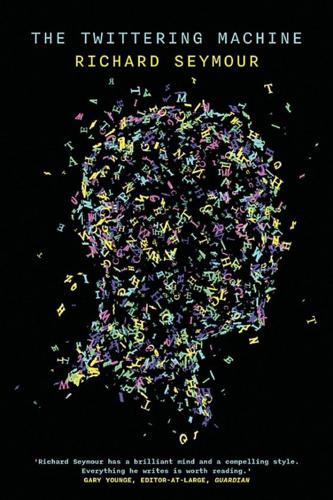
The Twittering Machine
by
Richard Seymour
Published 20 Aug 2019
If Lonina came to regret this short burst of celebrity, it is now perpetuated in algorithmic form. Google searches for her name now return pornography websites offering pages titled ‘Marina Lonina Periscope Porn’ and ‘Marina Lonina Rape Video’. This dark side of celebrity is not in itself new. Josef Fritzel, Ted Bundy, Timothy McVeigh and Jeffrey Dahmer are among the murderers and rapists who have become overnight celebrities, receiving dozens or hundreds of love letters in prison.43 What is new is that, as celebrity is rewritten by algorithm, all can participate in the darkness. VII. Celebrity has always been an efficient means of focusing attention; the best attention hack money can buy.
…
Rob Crilly, ‘Teenager accused of live-streaming rape got “caught up in the likes”’, Daily Telegraph, 18 April 2016; Tyler Kingkade, ‘Why Would Anyone Film A Rape And Not Try To Stop It?’, Huffington Post, 21 April 2016. 42. According to the prosecutor, Lonina told police . . . Jill Bauer and Ronna Gradus, Hot Girls Wanted: Turned On, ‘Don’t Stop Filming’, Season One, Episode Six, Netflix, 2017. 43. Josef Fritzel, Ted Bundy, Timothy McVeigh and Jeffrey Dahmer . . . The erotic interest in Lonina was preceded by the fascination with Amanda Knox, who had stood trial for the murder of Meredith Kercher. In the UK, Channel 5’s flagship daytime programme, The Wright Stuff, hosted a debate entitled, ‘Foxy Knoxy: Would Ya?’ 44. Daniel Boorstin called celebrity the condition of being well known . . .
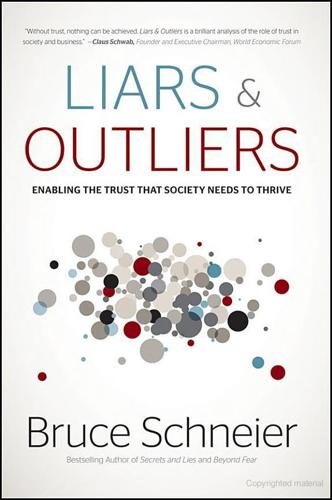
Liars and Outliers: How Security Holds Society Together
by
Bruce Schneier
Published 14 Feb 2012
All of this is the merchant's decision and the merchant's doing, and none of it is related to intra-group trust. If a storeowner installs a camera behind his cash register, it's not societal pressure; if a city installs cameras on every street corner, it is. And if the police use all the individually installed cameras in the area to track a suspect—as was done with Timothy McVeigh's van—then it's societal pressure. If society decides to subsidize in-store cameras, that's also societal pressure. If I carry a gun for self-defense, it's not societal pressure; if we as a society collectively arm our policemen, it is. You could argue there is no societal dilemma involved in the hotel's towel-security decision.
…
Chayes (2008), “A Statistical Model of Criminal Behavior,” Mathematical Models and Methods in Applied Sciences, 18 (Supplement):1249–67. Beth Pearsall (2010), “Predictive Policing: The Future of Law Enforcement?” NIJ Journal, 266:16–9. Nancy Murray (2011), “Profiling in the Age of Total Information Awareness,” Race & Class, 51:3–24. Timothy McVeigh's van Associated Press (28 Sep 2009), “Attorney: Oklahoma City Bombing Tapes Appear Edited,” Oklahoman. reduce car theft Ian Ayres and Steven Levitt (1998), “Measuring Positive Externalities from Unobservable Victim Precaution: An Empirical Analysis of Lojack,” Quarterly Journal of Economics, 113:43–77.

Rise of the Warrior Cop: The Militarization of America's Police Forces
by
Radley Balko
Published 14 Jun 2013
The militia movement was vast and fairly diverse, but most groups had views about government, guns, and property that were well to the right of the rest of the country. Very few espoused violence, but the new attention on the few that did, along with anger from the National Rifle Association (NRA), Gun Owners of America, and the rants of right-wing personalities like Liddy, inspired more reactionary opposition from the left. Then, on April 19, 1994, Timothy McVeigh set off a fertilizer bomb outside the Arthur Murrah Federal Building in Oklahoma City, killing 164 people. McVeigh claimed that he bombed the building in retaliation for the events at Waco. McVeigh’s act gave fresh fuel to the ATF’s defenders—not so much to defend the agency, but to attack its critics.
…
They leave the impression that, by their very words, that violence is acceptable.” Of course, just as it was possible to think David Koresh was a madman and be appalled by the federal government’s siege at Waco, it was also possible to believe the ATF deserved sharp criticism for its handling of both Ruby Ridge and Waco and be appalled at Timothy McVeigh’s retaliatory murder of 164 innocent people. But McVeigh’s actions seemed to cement partisian battle lines for years to come, at least when it came to ATF abuses. The final event to nudge the right to question the militarization of police—at least at the federal level—was the raid to wrest five-year-old Cuban refugee Elián González from the home of his relatives in Miami.39 In November 1999, González had fled to Florida on a boat with his mother and her boyfriend.
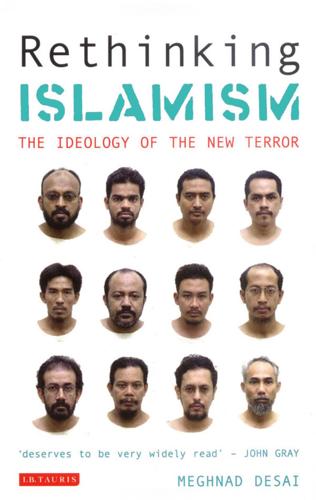
Rethinking Islamism: The Ideology of the New Terror
by
Meghnad Desai
Published 25 Apr 2008
. Henry David Thoreau isperhapsthemostfamousAmericananarchist.Therehasbeenan individualist anti-state tradition in American thinking since the originoftheRepublic. Sometimes the anarchist tradition in America takes a violent turn,asinthecaseofTimothyMcVeigh,whodestroyedanOklahomafederalbuildinginApril.Hesaidhewasdefendingthe Constitution.Thereisascatteredanarchistright-wingmovement inAmericawhichsuspectseitherthatthefederalgovernmenthas betrayed the Constitution by taking too much power to itself or thatithassoldoutAmericansovereigntytotheUnitedNations, whichnowrulesoverthecountryandthereforemustbedestroyed. During the s and s there was a movement to impeach the Supreme Court Chief Justice Earl Warren, as well as groups suchastheMinutemenwhowerearmedandpreparedforinsurrection.

The New Class War: Saving Democracy From the Metropolitan Elite
by
Michael Lind
Published 20 Feb 2020
The United States and the established democracies of Western Europe in the twenty-first century do not resemble in any significant way the unstable Weimar Republic that was overthrown by Hitler and replaced by a militaristic, genocidal, totalitarian state. Even so, there are genuine neo-Nazis and other white supremacists in the West, including the American mass murderers Timothy McVeigh, Dylann Roof, and Patrick Crusius. Police and intelligence agencies in the US and Europe should do their best to identify genuine potential domestic and foreign terrorists and prevent them from doing harm. Liberal democracy in the West today is not endangered by Russian machinations or resurgent fascism.
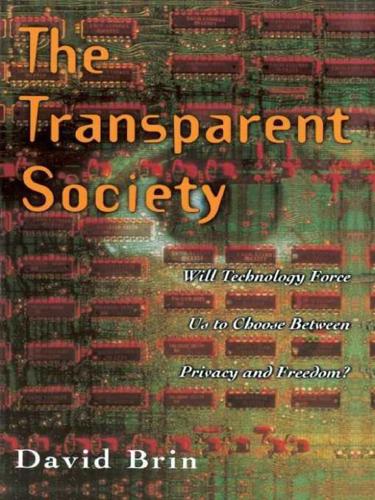
The Transparent Society: Will Technology Force Us to Choose Between Privacy and Freedom?
by
David Brin
Published 1 Jan 1998
Biologists and physicians have a name for what happens when white blood cells scorn the organism they were made to serve, tearing loose the bonds of commensal life, attacking healthy tissue and bringing on a general collapse. The condition is a type of cancer called leukemia. When disdain of authority becomes bilious hatred, the result may be not a helpful dissenter but a calamitous traitor, such as Timothy McVeigh. In his published letters, the convicted Oklahoma City bomber repeatedly exulted in his own “exceptional” intelligence and insight, expressing not only wrath over purported government schemes but also delighted pride in being among the only ones to “see through their propaganda and lies.” McVeighʼs need to feel special was so profound, and his contempt for his fellow citizens so deep, that he cut himself off from every bit of feedback or criticism—anything that might have helped him notice the horrible error sloshing through his endorphin-soaked brain—the error of rationalizing a foul criminal act, the murder of 162 innocent neighbors and children.
…
It should be noted that the analogy with a human immune system is inherently limited. For instance, in our own bodies, T-cells are ruthlessly winnowed by the thymus gland (hence the T) in order to ensure that these vigorous antagonist agents do not attack the self. Should we emulate such a culling mechanism, in order to prevent the harm done by “cancerous” cells, like Timothy McVeigh? Of course not! That would undermine the whole notion of error correction through criticism. And yet, might the same function of a social “thymus” be accomplished somehow through education and mental health? By instilling a loose sense of participation, community, and humor, while at the same time leaving undampened the eagerly individualistic drives that make for vigorous social critics?
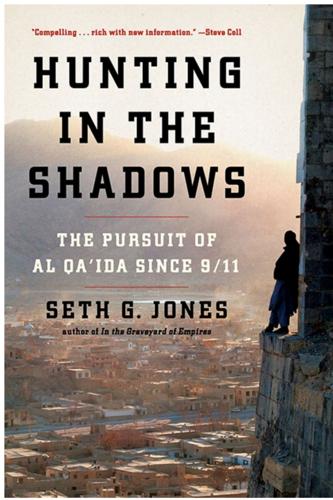
Hunting in the Shadows: The Pursuit of Al Qa'ida Since 9/11: The Pursuit of Al Qa'ida Since 9/11
by
Seth G. Jones
Published 29 Apr 2012
While these groups could be dangerous, the absence of a direct connection to al Qa’ida or one of its affiliates made them dilettantes. “You wouldn’t believe how much cannon fodder I had,” Abu Zubaydah had remarked after he was captured. For every competent operative Zubaydah had identified, there were dozens more who were mostly useless.99 A select few homegrown terrorists like Timothy McVeigh, who bombed the Alfred P. Murrah Building in Oklahoma City in May 1995, had the military training to perpetrate a significant attack. At best, the 2006 and 2007 plots would have killed a handful of Americans and scared many more—no small feats, to be sure. But they were never going to be the spectacular, mass-casualty attacks al Qa’ida was hoping for.
…
He had systematically risen up the FBI’s hierarchy to head counterterrorism and counterintelligence, thanks in part to his extraordinary competence, hard work, and blunt approach. It was fitting, then, for Cummings to retire on May 1, 2010, the day of Shahzad’s attempted attack. The timing couldn’t have been better. “We’re winning,” Cummings said to himself. “Even Timothy McVeigh could put a serious bomb together. But al Qa’ida was clearly on the wane. Shahzad’s bomb was a piece of crap.”73 WE GOT HIM BY LATE 2010, Ayman al-Zawahiri was under excruciating stress. Life as a fugitive in Pakistan had taken a heavy toll on his health and psychological well-being. His moods swung between cagey optimism about the war and morbid fatalism.
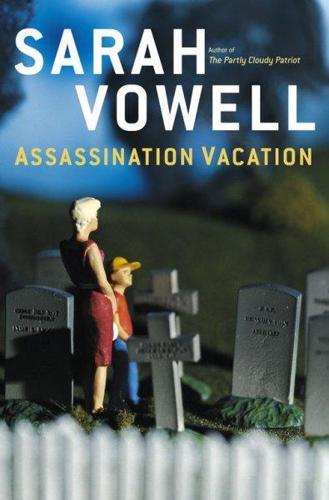
Assassination Vacation
by
Sarah Vowell
Published 28 Mar 2005
However, careful readers who are also symbolism devotees would have noticed that the date in 1861 when the Baltimore mob clashed with the Massachusetts soldiers was April 19 — Patriot’s Day — the anniversary of Lexington and Concord, when the first shots were fired in the Revolutionary War. It is also the anniversary of the Oklahoma City bombing in 1995. When Timothy McVeigh bombed the Murrah Federal Building in Oklahoma City, he was wearing a T-shirt. On the back of the T-shirt, perhaps as a nod commemorating Patriot’s Day, was the famous quote from Founding Father Thomas Jefferson, “The tree of liberty must be refreshed from time to time with the blood of patriots and tyrants.”

Better: A Surgeon's Notes on Performance
by
Atul Gawande
Published 2 Apr 2007
I was a senior official in the 1992 Clinton presidential campaign and in the administration, and in that role I defended the president's stance in support of capital punishment. I have no illusions that the death penalty deters anyone from murder. I also have great concern about the ability of our justice system to avoid putting someone innocent to death. However, I believe there are some human beings who do such evil as to deserve to die. I am not troubled that Timothy McVeigh was executed for the 168 people he killed in the Oklahoma City bombing or that John Wayne Gacy was for committing thirty-three murders. Still, I hadn't thought much about exactly how the executions are done. And I have always instinctively regarded involvement in executions by physicians and nurses as wrong.
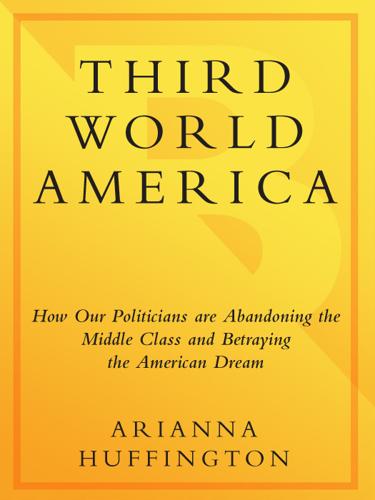
Third World America: How Our Politicians Are Abandoning the Middle Class and Betraying the American Dream
by
Arianna Huffington
Published 7 Sep 2010
In April 2010, hot on the heels of an outbreak of threats against members of Congress, came word that an Oklahoma Tea Party group was planning to form an armed militia to help defend the state against the perceived encroachment of the federal government—this in a state where, fifteen years earlier, Timothy McVeigh’s rage had turned deadly.133 The FBI was investigating an antigovernment extremist group that was sending letters to America’s governors demanding they resign or be “removed.”134 This followed the arrests of members of the Hutaree group, a radical Christian militia organization in Michigan that was plotting to kill police officers.135 When Tea Party members gathered for tax-day protests across the country, we were treated to a fresh wave of debate about whether these groups are fueled by anger, fear, racism, or class divisions.136 There was also talk about how much responsibility media outlets and certain political figures bear for inciting Tea Party crowds with violent rhetoric.
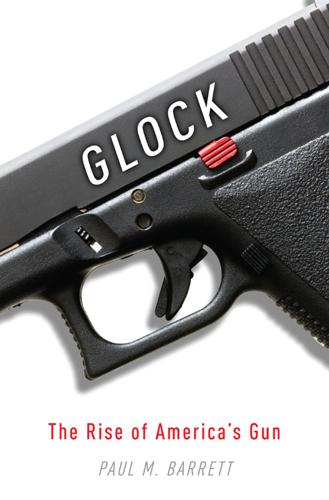
Glock: The Rise of America's Gun
by
Paul M. Barrett
Published 10 Jan 2012
As if the point had not been made with sufficient emphasis, LaPierre added: “Not too long ago, it was unthinkable for federal agents wearing Nazi bucket helmets and black storm trooper uniforms to attack law-abiding citizens. Not today.” The NRA’s rhetoric seemed even more out of bounds after April 19, 1995. On that day Timothy McVeigh, an anti-government militant, used a truck bomb to blow up a federal office building in downtown Oklahoma City. The facility housed regional branches of the FBI and the BATF. McVeigh killed 168 people, including many children in the facility’s day-care center; he injured more than 800. Former President George H.
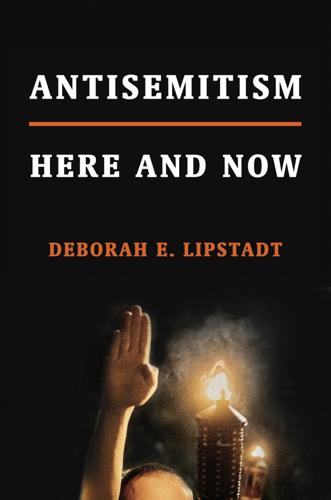
Antisemitism: Here and Now
by
Deborah E. Lipstadt
Published 29 Jan 2019
After the bombing of the Federal Building in Oklahoma City in 1995 (at the time, the deadliest attack on American government property since Pearl Harbor), the government became more vigilant about monitoring the activities of white power groups. Nonetheless, it still took the House of Representatives Subcommittee on Crime close to six months after the Oklahoma City bombing to hold a hearing on militias. No other committee took up the issue. Timothy McVeigh, the Oklahoma City bomber, was seen more as a lone wolf terrorist than as someone who had been influenced by a white power movement. Although some white supremacist groups were stripped of their resources, their members simply scattered to other small groups, formed new organizations, and became increasingly active on newly emerging social media.12 They did not go away.
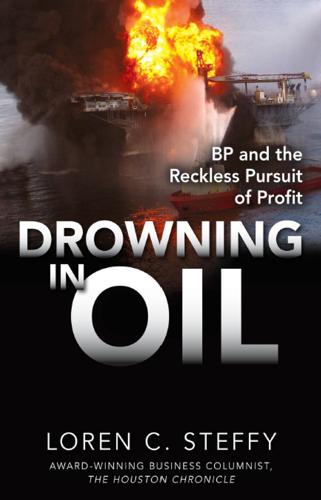
Drowning in Oil: BP & the Reckless Pursuit of Profit
by
Loren C. Steffy
Published 5 Nov 2010
The Grandcamp had been a Liberty ship, serving in the Pacific during World War II. After the war, it was given to the French to help in efforts to rebuild Europe. Part of that rebuilding process included supplying Europe with vast amounts of ammonium nitrate, a powerful fertilizer. It’s also a powerful explosive. The terrorist Timothy McVeigh used it in 1995 to blow up the federal building in Oklahoma City. Longshoremen loaded more than 50,000 of the 100-pound bags into the belly of the Grandcamp, fuel to help Europe replant, to help feed a war-ravaged continent. A few of the bags I M M I N E N T H A Z A R D seemed warm to the touch, but the longshoremen continued with their work.
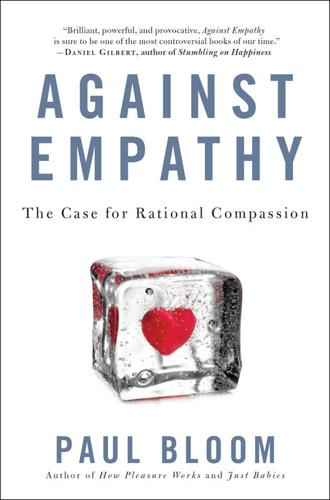
Against Empathy: The Case for Rational Compassion
by
Paul Bloom
Many, including myself, have argued that novels like Uncle Tom’s Cabin and Bleak House prompted significant social change by guiding readers to feel the suffering of fictional characters. But we tend to forget that other novels push us in different ways. Joshua Landy provides some examples: For every Uncle Tom’s Cabin there is a Birth of a Nation. For every Bleak House there is an Atlas Shrugged. For every Color Purple there is a Turner Diaries, that white supremacist novel Timothy McVeigh left in his truck on the way to bombing the Oklahoma building. Every single one of these fictions plays on its readers’ empathy: not just high-minded writers like Dickens, who invite us to sympathize with Little Dorrit, but also writers of Westerns, who present poor helpless colonizers attacked by awful violent Native Americans; Ayn Rand, whose resplendent “job-creators” are constantly being bothered by the pesky spongers who merely do the real work; and so on and so on.

Great American Hypocrites: Toppling the Big Myths of Republican Politics
by
Glenn Greenwald
Published 14 Apr 2008
In 2006, the event was attended by virtually the entire leadership of the Republican Party: Vice President Dick Cheney, Republican National Committee chairman Ken Mehlman, then–2008 presidential hopeful Senator George Allen, then–Senate Majority Leader Bill Frist, and Newt Gingrich. In addition to those luminaries, Ann Coulter was invited to be a featured speaker despite (or because of) her history of repeatedly urging the murder of her domestic political opponents and government officials by methods ranging from terrorist attacks (“My only regret with Timothy McVeigh is he did not go to the New York Times Building”) to assassinating Supreme Court Justices (“We need somebody to put rat poison in Justice Stevens’s crème brûlée”) to skull-bashing (“I think a baseball bat is the most effective way these days to talk to liberals”). None of those violence-advocating comments ever prevent the most prominent Republican groups from inviting her to speak, nor do they prevent the most prominent Republican politicians from appearing next to her without ever condemning her remarks.
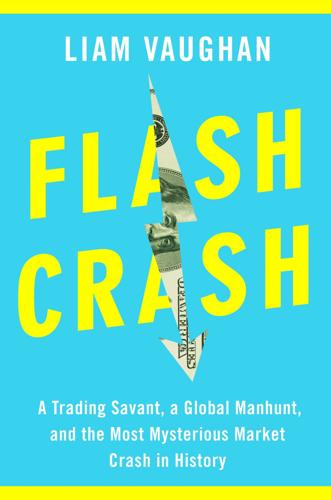
Flash Crash: A Trading Savant, a Global Manhunt, and the Most Mysterious Market Crash in History
by
Liam Vaughan
Published 11 May 2020
The team’s efforts to get Nav to sit down for a voluntary interview in the UK had gone nowhere, and the CFTC lacked the legal powers to access his communications. A breakthrough came in June 2014, with the arrival of a new head of enforcement. Aitan Goelman was a spiky former prosecutor from the Southern District of New York who made his name as a member of the team that prosecuted Timothy McVeigh, the Oklahoma City bomber. After hearing about the case in Kansas City, Goelman suggested they see if the Justice Department was interested in coming on board. The CFTC had recently partnered with the DOJ on the Libor scandal, a sprawling, multiyear investigation into interest-rate rigging across Wall Street, and Goelman was aware just how useful the criminal authorities’ powers could be.

Off the Edge: Flat Earthers, Conspiracy Culture, and Why People Will Believe Anything
by
Kelly Weill
Published 22 Feb 2022
The United States has been involved in damning and demonstrably true plots on its own soil (like the FBI’s plot to discredit Martin Luther King Jr.) and abroad (like the Reagan administration’s plot to illegally sell weapons to Iran in order to support counterrevolutionaries in Nicaragua). In light of these revelations, suspicion might seem justifiable, even reasonable, to many Americans. I’m no exception here. For instance, I am militant in my unproven belief that Oklahoma City bomber Timothy McVeigh was aided by sympathetic, uncharged members of the white power movement. Given an hour and a strong drink, I will talk your ear off about this, possibly while drawing maps and diagrams on the nearest surface. My belief probably means I can be classified as a conspiracy theorist. But conspiratorial belief is not without consequence.
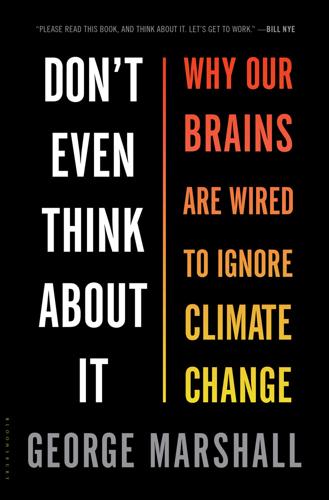
Don't Even Think About It: Why Our Brains Are Wired to Ignore Climate Change
by
George Marshall
Published 18 Aug 2014
Those on the far right have a particular attachment to demonizing their political opponents. In 2011 the website Right Wing News surveyed forty-three popular conservative bloggers to determine the “worst figures in American history.” Jimmy Carter, Barack Obama, and Franklin D. Roosevelt led the tally, all well ahead of Benedict Arnold, Timothy McVeigh, and John Wilkes Booth. The inability to differentiate between psychopathic killers and ideological opponents is perfectly exemplified in a notorious billboard erected by the Heartland Institute in Chicago with the photograph of the murderer Ted Kaczynski (the Unabomber) and the caption “I still believe in global warming, do you?”

Cyber War: The Next Threat to National Security and What to Do About It
by
Richard A. Clarke
and
Robert Knake
Published 15 Dec 2010
“Indeed,” they continue, “the cyber enhancements that the military is banking on for its conventional forces may be chinks in America’s armor.” So by the mid-1990s journalists were seeing that the Pentagon and the intelligence agencies were excited about the possibility of creating cyber war capabilities, but doing so would create a double-edged sword, one that could be used against us. MARCHING INTO THE MARSH Timothy McVeigh and Terry Nichols woke a lot of people up in 1995. Their inhumane attack in Oklahoma City, killing children at a day care center and civil servants at their desks, really got to Bill Clinton. He delivered an especially moving eulogy near the site of the attack. When he came back to the White House, I met with him, along with other White House staff.
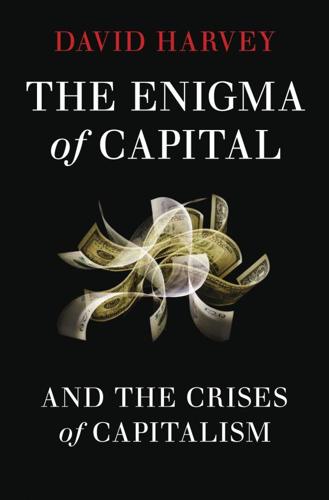
The Enigma of Capital: And the Crises of Capitalism
by
David Harvey
Published 1 Jan 2010
An older generation of mainly white male workers in the US, for example, are incensed at what they consider to be the rising power of minorities, immigrants, gays and feminists, aided and abetted by arrogant intellectual (‘coastal) élites and greedy and ungodly Wall Street bankers who are generally perceived (wrongly) to be Jewish. Radical right-wing and armed militia movements of the sort that nurtured Timothy McVeigh of Oklahoma bombing fame have revived since Obama’s election. They would plainly not join some grand anti-capitalist struggle (even though they are expressing antagonisms to bankers, corporations and élites and hatred for the Federal Reserve). They bear witness to a struggle on the part of those who feel alienated and dispossessed to repossess the country that they love by any means.

Alpha Girls: The Women Upstarts Who Took on Silicon Valley's Male Culture and Made the Deals of a Lifetime
by
Julian Guthrie
Published 15 Nov 2019
She looked at the clock on her dashboard and switched to AM radio for news. The host was talking about the 1995 bombing of the Federal Building in Oklahoma City, which had killed 168 people, including 19 children, and injured more than 500 others. She turned up the volume. No matter how many times she heard the bomber’s name—Timothy McVeigh—she couldn’t bring together what she heard with what she knew about McVeigh from high school. Back home in western New York, Theresia and McVeigh had worked together at Burger King. They both had run track in high school, been huge Buffalo Bills fans, and graduated in 1986. McVeigh wore camouflage and loved guns.
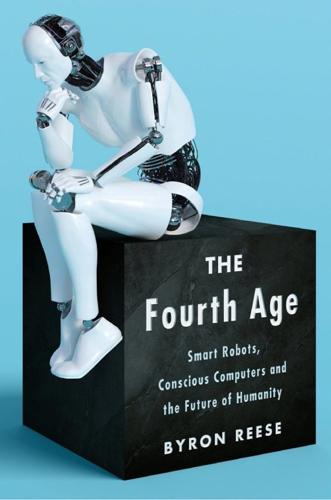
The Fourth Age: Smart Robots, Conscious Computers, and the Future of Humanity
by
Byron Reese
Published 23 Apr 2018
What will change is the calculus around when to use them. That will become an ever more expensive and riskier proposition. In spite of all the advances to come in the Fourth Age, there are two destructive forms of violence that won’t end any time soon. The first is that there will always be people like Anders Behring Breivik, Timothy McVeigh, and the Tsarnaev brothers. We will always have people like the 9/11 bombers. Far away are the days when there exists no one evil enough or crazy enough to want to inflict mass destruction on strangers. I have no easy answer for this, and the reality is that these individuals’ ability to inflict ever more destruction will increase.

Gray Day: My Undercover Mission to Expose America's First Cyber Spy
by
Eric O'Neill
Published 1 Mar 2019
I received my FBI credentials and swore to support and defend the Constitution three years after the first World Trade Center attack killed six people and injured thousands. Two years after jihadists had tried to topple one World Trade Center building into the other, anti–US government extremists Timothy McVeigh and Terry Nichols parked a Ryder truck full of explosives under a day care in the Alfred P. Murrah Federal Building in downtown Oklahoma City. The bombing killed 168 people and injured more than 680 others. A year after that, Eric Robert Rudolph left a green US military field pack containing three pipe bombs surrounded by masonry nails near a concert at Centennial Olympic Park during the 1996 Atlanta Olympic Games.

Wired for War: The Robotics Revolution and Conflict in the 21st Century
by
P. W. Singer
Published 1 Jan 2010
It must recognize that change is afoot, and not merely one that will only be to America’s benefit. [THIRTEEN] OPEN-SOURCE WARFARE: COLLEGE KIDS, TERRORISTS, AND OTHER NEW USERS OF ROBOTS AT WAR If I can imagine it, what would a totally dedicated, well-educated individual do, especially if they have a Timothy McVeigh personality? — GREG BEAR In the summer of 2005, Sam Bell set out to buy a military-grade robotic drone. As a subsequent article about his experience described, “It was an unusual shopping expedition for a private citizen, much less a 22-year-old only a few months removed from his political science and philosophy studies at Swarthmore College.
…
The footage was so detailed that they were able to sight their mortars to target the soft-skinned tents in the base, rather than harder-to-damage buildings. THE PERILS OF A BAD HAIR DAY When we think of the terrorist risks that emanate from unmanned systems, robotics expert Robert Finkelstein advises that we shouldn’t just look at organizations like al-Qaeda. “They can make a lone actor like Timothy McVeigh even more scary.” He describes a scenario in which “a few amateurs could shut down Manhattan with relative ease.” (Given that my publisher is based in Manhattan, we decided to leave the details out of the book.) Washington Post technology reporter Joel Garreau similarly writes, “One bright but embittered loner or one dissident grad student intent on martyrdom could—in a decent biological lab for example—unleash more death than ever dreamed of in nuclear scenarios.
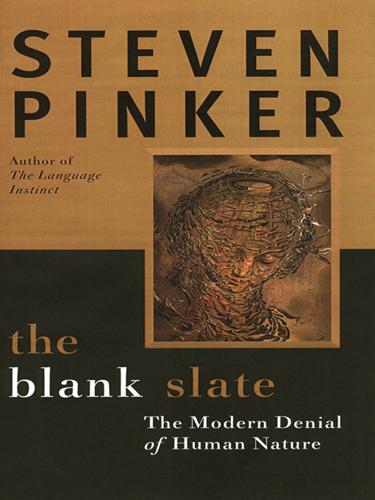
The Blank Slate: The Modern Denial of Human Nature
by
Steven Pinker
Published 1 Jan 2002
It’s our cultural predisposition to violence. We pummel each other, maul each other, stab each other and shoot each other because it’s our cultural imperative to do so.16 When culture is seen as an entity with beliefs and desires, the beliefs and desires of actual people are unimportant. After Timothy McVeigh blew up a federal office building in Oklahoma City in 1995, killing 168 people, the journalist Alfie Kohn ridiculed Americans who “yammer about individual responsibility” and attributed the bombing to American individualism: “We have a cultural addiction to competition in this country. We’re taught in classrooms and playing fields that other people are obstacles to our own success.”17 A related explanation for the bombing put the blame on American symbols, such as the arrow-clutching eagle on the national seal, and state mottoes, including “Live Free or Die” (New Hampshire) and “With the sword, we seek peace, but under liberty” (Massachusetts).18 A popular recent theory attributes American violence to a toxic and peculiarly American conception of maleness inculcated in childhood.
…
James Bond, for example—who actually has a license to kill—is British, and martial arts films are popular in many industrialized Asian countries. In any case, only a bookworm who has never actually seen an American movie or television program could believe that they glorify murderous fanatics like Timothy McVeigh or teenagers who randomly shoot classmates in high school cafeterias. Masculine heroes in the mass media are highly moralistic: they fight bad guys. Among conservative politicians and liberal health professionals alike it is an article of faith that violence in the media is a major cause of American violent crime.
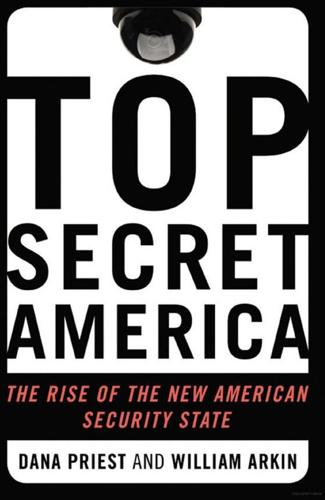
Top Secret America: The Rise of the New American Security State
by
Dana Priest
and
William M. Arkin
Published 5 Sep 2011
Even in the smallest local police agencies, excitement over the post-9/11 national security mission was palpable. Idaho State Police sergeant Russell Wheatley, who manages the state’s intelligence fusion center, did not have any international problems to investigate. The closest he got was arresting violent white supremacist and survivalist groups. Timothy McVeigh and Terry Nichols were never far from his mind. But he was ready to join the bigger fight against global terrorism anytime. Sitting in his squad car one day, his enthusiasm bubbled over. “It kinda gives me a chill to think that something a state trooper does will someday evolve into something that has to do with national security.”

Rogue State: A Guide to the World's Only Superpower
by
William Blum
Published 31 Mar 2002
(The FBI reportedly came to the latter conclusion long before the video was made public.6) Given that, it appears eminently safe to say that exceedingly few other people in the world were knowingly in on the plot, perhaps a number that can be counted on the fingers of one hand. Consequently, if the American bombing campaign in Afghanistan was designed to kill the actual perpetrators, it was a fool's mission; a violent fool. If Timothy McVeigh, perpetrator of the terrible bombing of the federal building in Oklahoma City in 1995, had not been quickly caught, would the United States have bombed the state of Michigan or any of the other places he called home? No, they would have instituted a mammoth manhunt until they found him and punished him.

The Knowledge: How to Rebuild Our World From Scratch
by
Lewis Dartnell
Published 15 Apr 2014
The immediate response of the soda plants was to scrub this soluble gas by sprinkling water down the inside of their chimneys and discharge the resultant hydrochloric acid straight into the nearest river, deftly sidestepping the legislation by turning air pollution into water pollution! * More than two tons of ammonium nitrate fertilizer were packed by Timothy McVeigh into the back of a truck for the Oklahoma City bombing, and one of the world’s largest non-nuclear explosions occurred in 1947 when a fire caused a ship carrying more than 2,000 tons of the compound to detonate in the port of Texas City. * The parallel streets of Manhattan’s grid-like layout are aligned along a bearing of 30 degrees east of celestial north, and twice a year (in late May and mid-July, evenly flanking the summer solstice), this grid behaves like a city-size Stonehenge, with the sun setting right down the centerline of the canyon-like streets
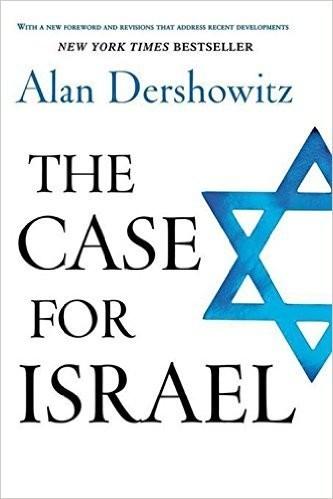
The Case for Israel
by
Alan Dershowitz
Published 31 Jul 2003
Even women—they’re stepping all over them.”10 Bandar described the anger of the prince, especially at the Israeli practice of destroying the houses of family members of terrorists: “We wonder how the American people would have accepted the President of the United States ordering all the McVeigh family houses to be destroyed or burning their farms,” he said, referring to the Oklahoma City bomber Timothy McVeigh.11 c17.qxd 6/25/03 8:25 AM Page 121 THE CASE FOR ISRAEL 121 Abdullah failed to mention that McVeigh’s family did not praise their son’s actions. Nor did they assist him and encourage him to become a martyr. Moreover, he was not part of an ongoing effort that continues to terrorize civilians.
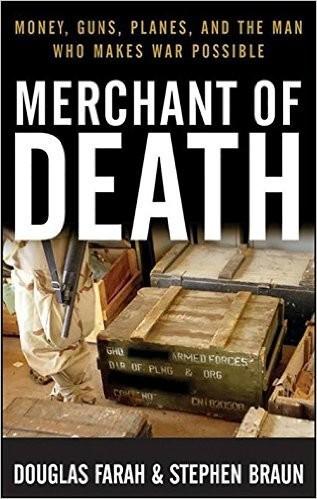
Merchant of Death: Money, Guns, Planes, and the Man Who Makes War Possible
by
Stephen Braun
and
Douglas Farah
Published 1 Apr 2008
In March 1995, the bizarre attempt by Aum Shinrikyo cult members to release nerve gas in a Tokyo subway added biological and chemical attacks as a perceived threat in the terror arsenal—along with growing worries about loosely controlled nuclear materials. A month later, the Oklahoma City bombing by right-wing extremist Timothy McVeigh raised new fears of attacks on government buildings. Clinton responded with a classified June 1995 directive that identified terrorism as the most urgent national security issue, putting all agencies on notice to “deter, defeat, and respond vigorously to all terrorist attacks on our territory.”
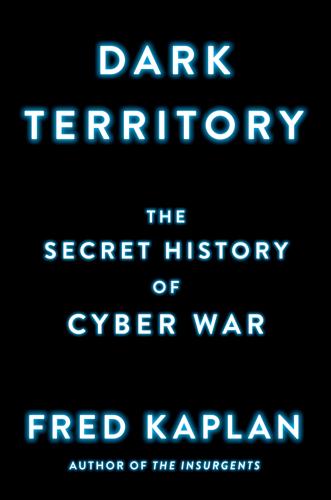
Dark Territory: The Secret History of Cyber War
by
Fred Kaplan
Published 1 Mar 2016
It was McConnell’s well-intentioned, but misguided, effort to forge a compromise between personal privacy and national security—and to do so openly, in the public eye. The next time the NSA created or discovered back doors into data, it would do so, as it had always done, under the cloak of secrecy. CHAPTER 3 * * * A CYBER PEARL HARBOR ON April 19, 1995, a small gang of militant anarchists, led by Timothy McVeigh, blew up a federal office building in Oklahoma City, killing 168 people, injuring 600 more, and destroying or damaging 325 buildings across a sixteen-block radius, causing more than $600 million in damage. The shocking thing that emerged from the subsequent investigation was just how easily McVeigh and his associates had pulled off the bombing.
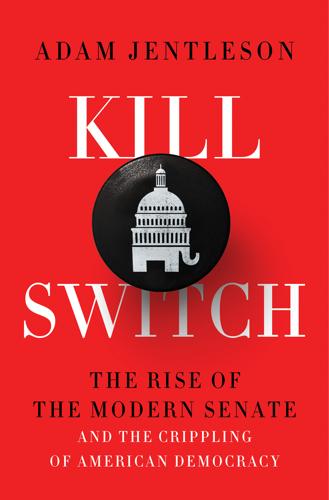
Kill Switch: The Rise of the Modern Senate and the Crippling of American Democracy
by
Adam Jentleson
Published 12 Jan 2021
“Well …,” I said, thinking out loud about what I was going to tell the reporters waiting in the hallway outside Reid’s office. “Well, this could be good …,” I started. Reid threw back his head, laughing. Judge Merrick Garland is a wonderful human being with an impressive record. At the Justice Department, he had overseen the federal investigations into the Oklahoma City bomber, Timothy McVeigh, and the Unabomber, Ted Kaczynski. His credentials as a jurist were unimpeachable, and he had been confirmed to his current job on the U.S. Court of Appeals D.C. Circuit with Republican support. For eighteen years, he tutored children at a public school in a low-income neighborhood of Washington, DC.
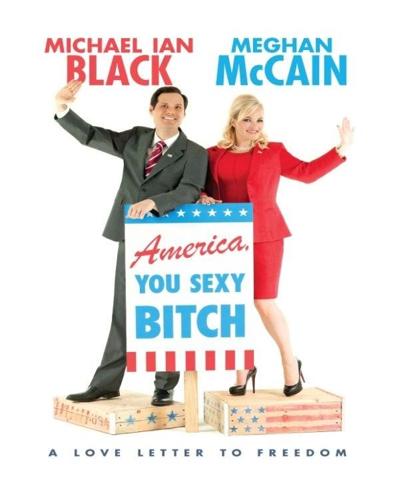
America, You Sexy Bitch: A Love Letter to Freedom
by
Meghan McCain
and
Michael Black
Published 31 May 2012
My best Muslim friend is a comedian with Elvis sideburns who does a videogame podcast; it’s hard for me to get too worked up about Islam in general when that’s the guy I most closely associate with the faith. At the same time, Americans tend to automatically dismiss homegrown, non-Muslim terrorists like Timothy McVeigh as nut jobs because all of us know so many people who look and act like him. Who hasn’t met the paranoid, angry white guy with the buzz cut muttering about black helicopters? Most of the time, that dude is a harmless crank. When he does end up doing the unthinkable, we shrug him off as crazy.
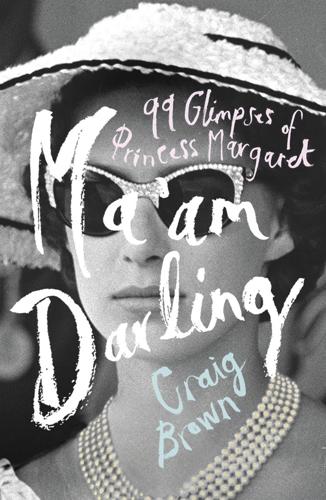
Ma’am Darling
by
Craig Brown
Published 28 Jul 2017
He claimed that she had once told him the reason for her unpopularity: ‘It was inevitable; when there are two sisters and one is the Queen who must be the source of honour and all that is good while the other must be the focus of the most creative malice, the evil sister.’ * In his final decade, Vidal’s aperçus became more and more crackpot. In different essays, he argued that Frank Sinatra was a charming man who had no connection with the Mafia; that there was a media conspiracy to demonise Oklahoma bomber Timothy McVeigh, who was simply an innocent young man with an exaggerated sense of justice; that there is ‘overwhelming’ evidence that the 1995 Oklahoma bombing was part of a plot by the US government to get President Clinton to sign an anti-terrorism act; that Anthony Hopkins is just ‘a solid, workmanlike English repertory actor’; that 90 per cent of all American paper currency contains drug residue; that Clinton was innocent of any sexual congress with Monica Lewinsky, who had been put up to it by the American tobacco industry; and that the Soviet Union had never been any danger to anyone.

The Ransomware Hunting Team: A Band of Misfits' Improbable Crusade to Save the World From Cybercrime
by
Renee Dudley
and
Daniel Golden
Published 24 Oct 2022
Murrah Federal Building in Oklahoma City, the Clinton administration called together a dozen officials from across the government to assess the vulnerability of the nation’s critical infrastructure. Since essential services such as health care and banking were moving online, the committee quickly turned its attention from physical threats, like Timothy McVeigh’s infamous Ryder truck, to computer-based ones. The group helped establish what became known as the National Infrastructure Protection Center (NIPC) in 1998. With representatives from the FBI, the Secret Service, intelligence agencies, and other federal departments, the NIPC was tasked with preventing and investigating computer intrusions.
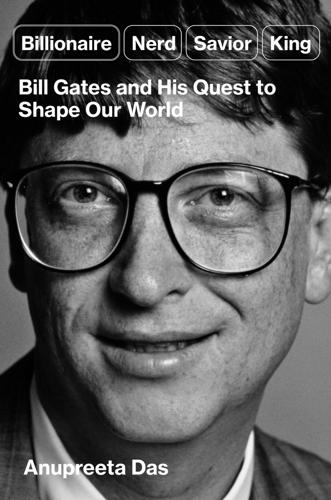
Billionaire, Nerd, Savior, King: Bill Gates and His Quest to Shape Our World
by
Anupreeta Das
Published 12 Aug 2024
McCarthyism, the name given to Wisconsin senator Joseph McCarthy’s years-long witch hunt for alleged communists in American institutions during the Cold War era, was one of the most popular. Conspiracy theorists were behind the rumor that John F. Kennedy was killed by the Central Intelligence Agency. In 1995, the Oklahoma City bombing lit up the internet with conspiracies, as some outlandish theories took hold, including that Timothy McVeigh, one of the suspects, was a “zombie” controlled by the government. Conspiracy theorists whipped up false narratives about former president Bill Clinton and his wife, Hillary Rodham Clinton, in the 1990s. They villainized the left-wing billionaire George Soros and the right-wing Koch brothers.
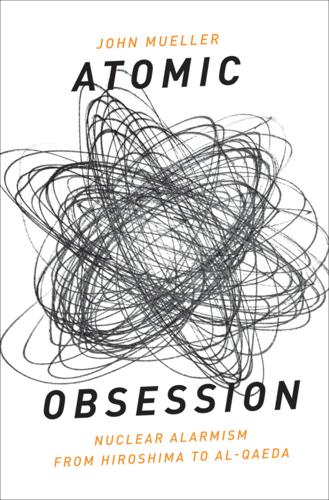
Atomic Obsession: Nuclear Alarmism From Hiroshima to Al-Qaeda
by
John Mueller
Published 1 Nov 2009
Massachusetts Institute of Technology: Defense & Arms Control Studies Program Seminar, 29 November. Meyer, Josh. 2006. “U.S. Faults Saudi Efforts on Terrorism.” Los Angeles Times 15 January: A1. Meyer, Stephen M. 1984. The Dynamics of Nuclear Proliferation. Chicago: University of Chicago Press. Michel, Lou, and Dan Herbeck. 2001. American Terrorist: Timothy McVeigh and the Oklahoma City Bombing. New York: ReganBooks. Milhollin, Gary. 2002. “Can Terrorists Get the Bomb?” Commentary February: 45–49. Milward, Alan S. 1977. War, Economy and Society, 1939–1945. Berkeley: University of California Press. Mlakar, Paul F. Sr., W. Gene Corley, Mete A. Sozen, and Charles H.
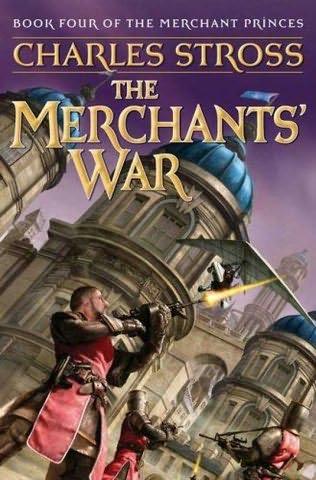
Merchants' War
by
Stross, Charles
Published 30 Sep 2007
"That's- " he swallowed "-it may be true, but that's not how things work right now. Not since 9/11." "Then they're going to regret it." Her gaze was level. "You must warn your superiors of this-the political is personal. If the conservatives think your government is mistreating their prisoners, they'll take revenge, horrible revenge. Timothy McVeigh and Mohamed Atta were rank amateurs compared to these people, and Clan security probably can't prevent an atrocity from happening if you provoke them. You need to warn your bosses, Mr. Fleming. They're playing with fire: or would you like to see a suicide bomber invite himself to the next White House reception?"

Giving the Devil His Due: Reflections of a Scientific Humanist
by
Michael Shermer
Published 8 Apr 2020
He references the number 14 to indicate the fourteen-word slogan originally coined by white supremacist David Lane while imprisoned for his role in the 1984 murder of Jewish radio talk-show host Alan Berg: “We must secure the existence of our people and a future for white children.” Lane, for his part, explicitly extolled the writings of white supremacist William Pierce, who in turn inspired Timothy McVeigh to blow up the Oklahoma City federal building in 1995, killing 168 people. Accusations of racism and white supremacism are thrown around so casually these days that the meaning of these terms has become diluted and ambiguous. So, for clarity, I will state the obvious by emphasizing that the writings of Tarrant, Lane, and Pierce all reflect attitudes that are completely racist and hateful, as such terms are properly used.
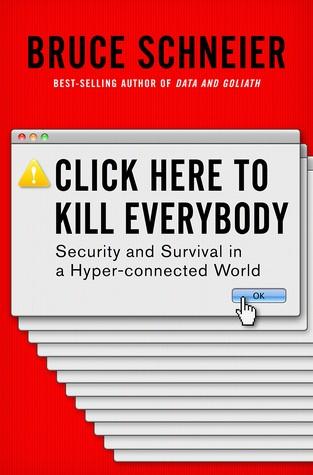
Click Here to Kill Everybody: Security and Survival in a Hyper-Connected World
by
Bruce Schneier
Published 3 Sep 2018
But while ubiquitous surveillance could succeed in the majority of those cases, primarily against less technically savvy attackers, it would fail against the most motivated, most skilled, and best-funded attackers. As technology improves, the number of conspirators and the amount of planning required to unleash havoc shrinks further, making surveillance-based detection even less effective. Think of Timothy McVeigh’s fertilizer bomb, and the handful of accomplices who helped him attack the Alfred P. Murrah Federal Building. Maybe ubiquitous surveillance could have detected the plot in the planning and purchasing stages, but probably not. Targeted surveillance, based on old-fashioned follow-the-lead police work, might more effectively identify those who advocate violent overthrow of the US government and go about assembling bomb-making materials.
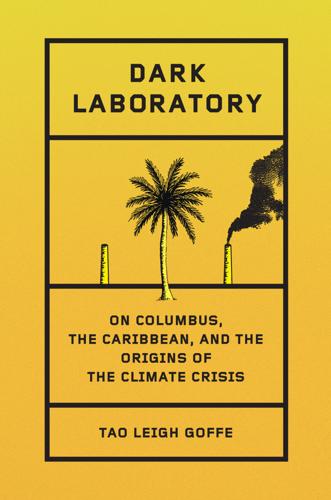
Dark Laboratory: On Columbus, the Caribbean, and the Origins of the Climate Crisis
by
Tao Leigh. Goffe
Published 14 Mar 2025
Other witnesses, documented in the Library of Congress, are southern magnolias, willow oaks, cherry trees, and elms, living specimens hundreds of years old that are listed as part of the Witness Tree Protection Program, established in 2006. This state-sponsored registry at once memorializes and endangers the trees by drawing public attention to their existence. Some of these trees are marked because they are said to have witnessed the March on Washington. Others were present for the 1995 Oklahoma City bombing perpetrated by Timothy McVeigh. The climate politics of national tragedy and witness by American trees will always be vexed. Many such ecological witnesses of the natural world have resisted European colonialism across the broader Americas. One of the doctors present on Columbus’s voyages wrote of the thicket of mangroves on the coast of Guanahaní when the Nina, the Pinta, and the Santa Maria first ran aground in 1492.
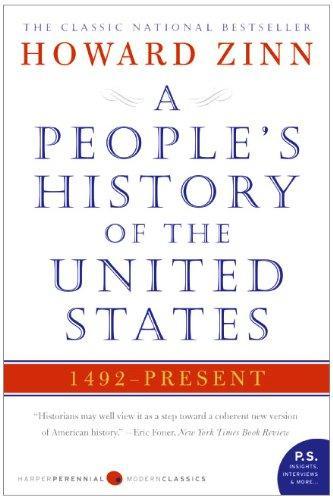
A People's History of the United States
by
Howard Zinn
Published 2 Jan 1977
There is no Justice Department to investigate the Justice Department.” One of the people sentenced by the judge was Renos Avraam, who commented: “This nation is supposed to run under laws, not personal feelings. When you ignore the law you sow the seeds of terrorism.” This turned out to be a prophetic statement. Timothy McVeigh, who some years after the Waco tragedy was convicted of bombing the Federal Building in Oklahoma City, which cost 168 lives, had visited the Waco site twice. Later, according to an FBI affidavit, McVeigh was “extremely agitated” about the government’s assault on Waco. Clinton’s “law and order” approach led him early in his first term to sign legislation cutting funds for state resource centers that supplied lawyers to indigent prisoners.
…
Lawful permanent residents who had married Americans and now had children were not exempt. The New York Times reported that July that “hundreds of long-term legal residents have been arrested since the law passed.” There was a certain irrationality to this new law, for it was passed in response to the blowing up of the Federal Building in Oklahoma City by Timothy McVeigh, who was native born. The new government policy toward immigrants, far from fulfilling Clinton’s promise of “a new government for a new century,” was a throwback to the notorious Alien and Sedition Laws of 1798 and the McCarthy-era McCarran-Walter Act of the 1950s. It was hardly in keeping with the grand claim inscribed on the Statue of Liberty: “Give me your tired, your poor, your huddled masses yearning to breathe free, the wretched refuse of your teeming shore.
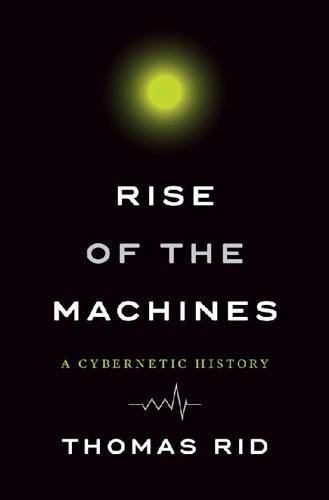
Rise of the Machines: A Cybernetic History
by
Thomas Rid
Published 27 Jun 2016
It would take far less time to answer, “What would remain the same?” No longer would we be electing people who will turn around and tax us to death, regulate us to death, or for that matter sent [sic] hired thugs to kill us when we oppose their wishes.78 Bell, predictably, became a divisive figure. Then–IRS inspector Jeff Gordon compared him to terrorist Timothy McVeigh, who bombed a federal building in downtown Oklahoma City in April 1995, killing 168 people. On the other end of the spectrum was John Young, an architect and cypherpunk who would found the first whistle-blowing portal in 1996: Cryptome. Young nominated Bell for a Chrysler Design Award for creating an “Information Design for Governmental Accountability.”79 Crypto anarchy, some successes notwithstanding, seemed to meander toward the fringe.
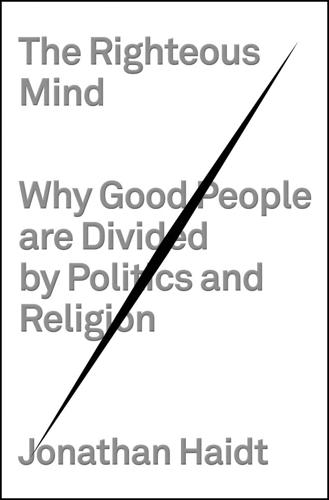
The Righteous Mind: Why Good People Are Divided by Politics and Religion
by
Jonathan Haidt
Published 13 Mar 2012
This is Boehm’s political transition and reverse dominance. If the original triggers of this foundation include bullies and tyrants, the current triggers include almost anything that is perceived as imposing illegitimate restraints on one’s liberty, including government (from the perspective of the American right). In 1993, when Timothy McVeigh was arrested a few hours after he blew up a federal office building in Oklahoma City, killing 168 people, he was wearing a T-shirt that said Sic semper tyrannis. Less ominously, the populist anger of the Tea Party relies on this foundation, as shown in their unofficial flag, which says “Don’t tread on me” (see figure 7.4).
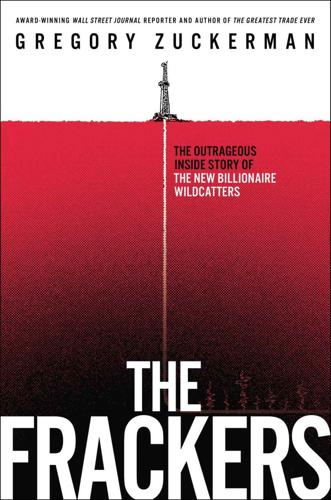
The Frackers: The Outrageous Inside Story of the New Billionaire Wildcatters
by
Gregory Zuckerman
Published 5 Nov 2013
“We know it’s a little more difficult financially here in Oklahoma City, but we think it’s great for the community and if we could break even we’d be thrilled.”6 For speaking his mind and acknowledging that the owners held out hope of moving the team after all, National Basketball Association commissioner David Stern slapped McClendon with a record $250,000 fine. Two years later, the team did move to Oklahoma City. McClendon wanted his company to be first-class and he wanted to help Oklahoma City gain its own recognition. The city had gone through its share of difficult times. In 1995, Timothy McVeigh, a man brimming with anger at the U.S. government, set off a bomb so powerful that it destroyed Oklahoma City’s Alfred P. Murrah Federal Building, as well as destroying or damaging over three hundred buildings nearby, taking 168 lives, including nineteen children under the age of six. McClendon cared about Oklahoma City and was determined to help it reinvent itself as a cultured and world-class city.
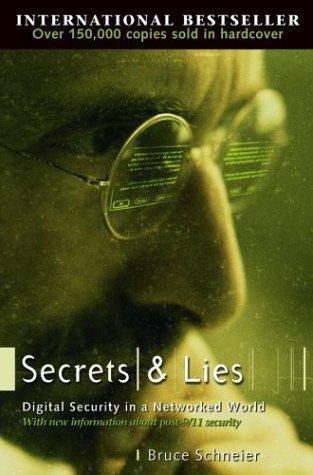
Secrets and Lies: Digital Security in a Networked World
by
Bruce Schneier
Published 1 Jan 2000
Now ask any Internet security professional how to take down the Internet, permanently. I’ve heard about half a dozen different ways, and I know I haven’t exhausted the possibilities. The knowledge is there; the systems are vulnerable. All it takes is someone with just the right combination of skill and morals. Sometimes it doesn’t even take that much skill. Timothy McVeigh did quite a number on the Oklahoma City federal building, even though his banausic use of explosives probably disgusted a professional like Loizeaux. Dr. Harold Shipman murdered possibly as many as 150 of his patients, using artless techniques like injecting them with morphine. At first glance cyberspace is no different from any other piece of our society’s infrastructure: fragile and vulnerable.
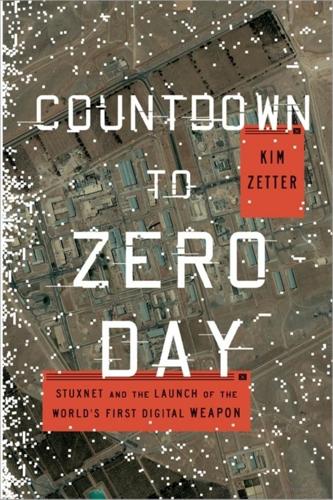
Countdown to Zero Day: Stuxnet and the Launch of the World's First Digital Weapon
by
Kim Zetter
Published 11 Nov 2014
Air traffic controllers had to use cell phones and battery-powered radios to direct planes during the outage.9 No accidents occurred, but an air traffic control manager told CNN, “We dodged a bullet that day.”10 That same year, the specially convened Marsh Commission published a report examining the vulnerability of critical infrastructure systems to attack—both physical and digital. The commission had been charged with investigating the matter after Timothy McVeigh blew up a federal building in Oklahoma City in 1995 and took out a number of key data and communication centers in the process. The commissioners warned of the increasing perils created from connecting critical systems for oil, gas, and electricity to the internet. “The capability to do harm … is growing at an alarming rate; and we have little defense against it,” they wrote.
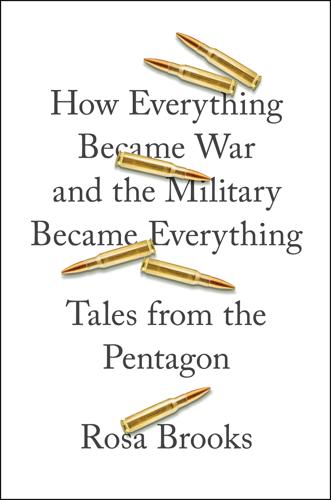
How Everything Became War and the Military Became Everything: Tales From the Pentagon
by
Rosa Brooks
Published 8 Aug 2016
War is an armed conflict between two or more states.”8 James Cole, a prominent government and private attorney who was later appointed Deputy Attorney General by President Obama, similarly insisted in a 2002 article that “for all the rhetoric about war, the Sept. 11 attacks were criminal acts of terrorism against a civilian population, much like the terrorist acts of Timothy McVeigh.”9 September 11 was a “devastating crime,” Cole continued, but one for which ordinary criminal law offered the most appropriate framework.10 Amnesty International took the same view.11 But others insisted with equal certainty on the correctness of the opposite proposition: insofar as the 9/11 attacks stemmed from overseas and caused death and destruction on a scale more commonly associated with armed conflict than with crime, they should be conceptualized as acts of war, triggering the law of armed conflict.

America Right or Wrong: An Anatomy of American Nationalism
by
Anatol Lieven
Published 3 May 2010
Nor has this been wholly lacking in the United States, if one remembers the number of successful (and unsuccessful) American generals elected to high office or encouraged to aspire to it.116 But in the United States, such threats have in the end always been contained by the institutions of American democratic constitutionalism, thanks not only to the institutions themselves, but to the strength and uniformity of the democratic national political culture and ideology sustaining them. Although at their farther 117 AMERICA RIGHT OR WRONG fringes the forces of the American antithesis shade over into fascistic manias like that of the terrorist Timothy McVeigh and the various militia movements, the great majority are not opposed to the formal democratic aspects of the American Creed; on the contrary, they take enormous pride in them and regard them as the core of American grandeur. This national unanimity behind democracy has formed the essential component of what might be called America's self-correcting mechanism, the country's ability to undergo periods of popular hysteria, moral panic and nationalist extremism without allowing them to become a permanent feature of the national scene or to be institutionalized in dictatorship.
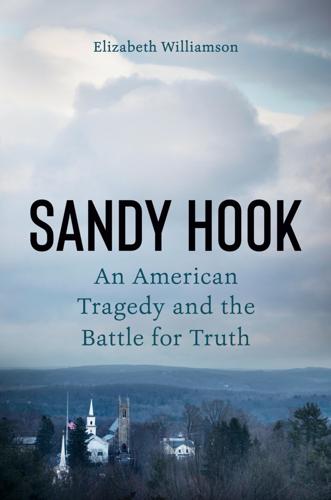
Sandy Hook: An American Tragedy and the Battle for Truth
by
Elizabeth Williamson
Published 8 Mar 2022
In an early sign of his influence and bankability, he raised $93,000 from Infowars listeners to rebuild the compound’s church. In 1995, Jones pushed bogus claims that the government plotted the bombing of the Alfred P. Murrah Federal Building in Oklahoma City, whose true perpetrator, domestic terrorist Timothy McVeigh, expressed rage at the Waco compound’s destruction.[5] Jones met his first wife, Kelly Nichols, on a sweltering day in downtown Austin in 1998. Jones was jumping up and down on a busy city street, wearing a fat-rumped bumble bee costume as an advertising stunt for KJFK. The future Kelly Jones had been a PETA activist, skilled at ginning up media attention.

Upheaval: Turning Points for Nations in Crisis
by
Jared Diamond
Published 6 May 2019
Naturally, global inequality by itself isn’t the direct cause of terrorist acts. Religious fundamentalism and individual psychopathology also play essential roles. Every country has its crazy angry individuals driven to kill other people; poor countries have no monopoly on them. The U.S. had its Timothy McVeigh who killed 168 people by a truck bomb in Oklahoma City, and its Theodore Kaczynski who mailed packages containing carefully designed bombs that killed three people and injured 23. Norway had its Anders Behring Breivik who killed 77 people and injured 319, many of them children, with a bomb and a gun.
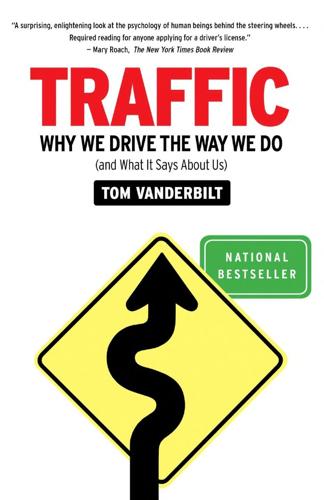
Traffic: Why We Drive the Way We Do (And What It Says About Us)
by
Tom Vanderbilt
Published 28 Jul 2008
drive rather than fly: “Consequences for Road Traffic Fatalities of the Reduction in Flying Following September 11, 2001,” Michael Sivak and Michael Flannagan, Transportation Research Part F: Traffic Psychology and Behavior, vol. 7, nos. 4–5 (July–September 2004), pp. 301–05. assigned to counterterrorism: Carl Ingram, “CHP May Get to Hire 270 Officers,” Los Angeles Times, June 2, 2004, p. B1. In the article, one police officer points out that Timothy McVeigh was caught on a “routine traffic stop.” Eerily enough, Mohammed Atta, the ringleader of the September 11 participants, was ticketed once for speeding and once for driving without a license; the license he finally got was suspended when he failed to appear in court. raising speed limits: Elihu D.
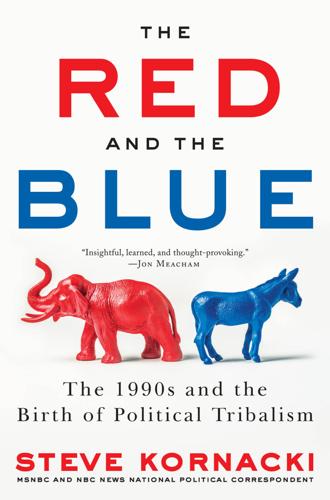
The Red and the Blue: The 1990s and the Birth of Political Tribalism
by
Steve Kornacki
Published 1 Oct 2018
Two years earlier, terrorists with roots in the Middle East had set off an explosive device in a parking garage beneath the World Trade Center, a failed effort to topple both towers that left six dead. Quickly, though, it emerged that the devastation in Oklahoma City was an act of domestic terror, conceived and executed by two native-born Americans—Timothy McVeigh and Terry Nichols—and fueled by their deep rage toward the federal government. There had never been a deadlier terror attack in the United States. Across the country, Americans absorbed images from Oklahoma City with horror and numbness. A memorial service was scheduled for the next Sunday, April 23.
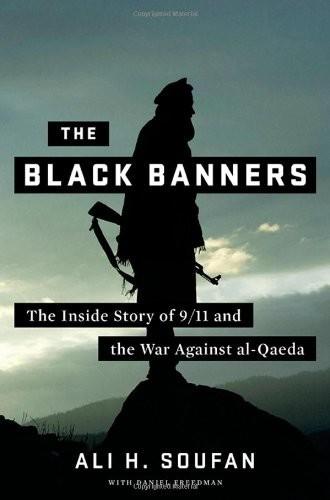
The Black Banners: The Inside Story of 9/11 and the War Against Al-Qaeda
by
Ali H. Soufan
and
Daniel Freedman
Published 11 Sep 2011
Witnesses reported that Abdu appeared to be the leader of the two other men. We also located the crane operators. They confirmed that they had rented a crane to two men for 10,000 rials. An FBI artist worked on creating sketches of the men. He was the same artist who had drawn the Wanted sketch of Timothy McVeigh, the Oklahoma City bomber. It was a tortuous process, as he didn’t speak Arabic and had to work through a translator. Despite the difficulty, the witnesses said that the final sketches were realistic likenesses. Days after we arrived in Yemen, one of my Yemeni friends told me confidentially that some pieces of the USS Cole, including parts of the protective fiberglass cover on the outer surface of the radar, had washed ashore.
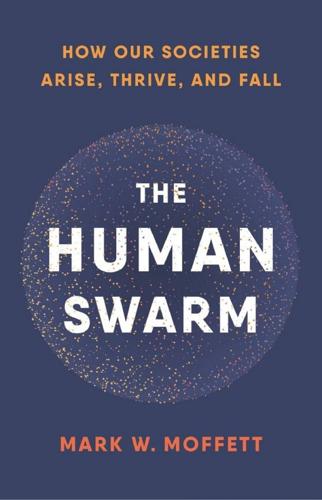
The Human Swarm: How Our Societies Arise, Thrive, and Fall
by
Mark W. Moffett
Published 31 Mar 2019
So when an American citizen with Afghan parents shot up a Florida nightclub in 2016, killing 49, the horrors set off a different and stronger outrage than if a majority person had pulled the trigger: one directed at a whole group of people perceived by many to share responsibility for the offense. Meanwhile a white committing such an atrocity, like Timothy McVeigh, who killed 168 in the 1995 Oklahoma City bombing, is more often seen as a deviant individual, personally accountable for what happened.42 Throughout the history of nations, one loathed group has replaced another in endless succession, their trustworthiness, indeed their merit and citizenship, called to question in a roller-coaster of perceptions.
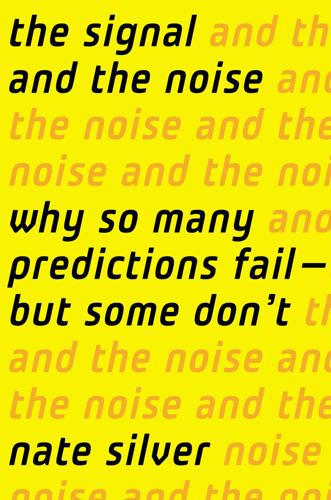
The Signal and the Noise: Why So Many Predictions Fail-But Some Don't
by
Nate Silver
Published 31 Aug 2012
Prior to September 11, the largest terror attack in a Western country* had been only about one-tenth as fatal, when in 1985 a Sikh extremist group hid a bomb in an Air India flight bound for Delhi from Montreal, killing 329 passengers. The destruction of Oklahoma City’s Alfred P. Murrah federal building by the militant Timothy McVeigh in 1995, which killed 168, had been the largest attack on American soil. But September 11 was not an outlier. Although the particulars of the events that day were not discerned in advance—and although they may have been very hard to predict—we had some reason to think that an attack on the scale of September 11 was possible.
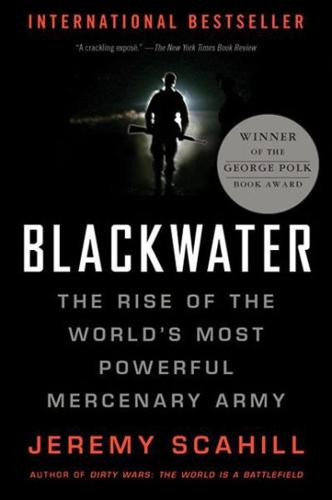
Blackwater: The Rise of the World's Most Powerful Mercenary Army
by
Jeremy Scahill
Published 1 Jan 2007
In the pre-9/11 days of Bill Clinton’s America, the planning commissioners weren’t worried about international terrorism and couldn’t have even comprehended the company that Blackwater would become. Instead, what concerned them was property values, noise ordinances, and the possibility that the types of militia groups that Oklahoma City bomber Timothy McVeigh had been linked to would come to their community for training. When Erik Prince appealed to the plan commissioners, his project was described as a “$2 million outdoor shooting range.”32 At the time, Prince estimated the facility could create up to thirty new jobs in the county and help to train its sheriff’s department.

The Code: Silicon Valley and the Remaking of America
by
Margaret O'Mara
Published 8 Jul 2019
My project, frankly, is to replace his world.”12 THE DECENCY PATROL Meanwhile, Senator James Exon looked at this new online landscape, and all he saw was smut. The Nebraska Democrat had grown alarmed by the tales he’d heard of the pornography and criminality that filled the Internet’s dark corners, from X-rated websites to the online copy of the “mayhem manual” that domestic terrorist Timothy McVeigh had used to blow up the federal building in Oklahoma City in the spring of 1995. Indeed, Exon was right: porn was the early Internet’s biggest growth industry, “one of the largest recreational applications of users of computer networks,” reported one widely-read survey. BBSs and Usenet groups—the information superhighway of the 1980s that had grown like a weed as online access expanded in the early 1990s—were now saturated with pornography, as more bandwidth allowed users to download and share images and videos with ease.

Colorado
by
Lonely Planet
Held in response to a botched federal raid at Ruby Ridge, the attendees came up with a solution to stem such overreaches by government forces: form militias. Soon there were militias in Montana, Michigan, Indiana and Colorado, where three men were arrested in connection with a pipe bomb in 1997. Of course, militias really made news when Timothy McVeigh detonated a truck bomb outside the Oklahoma City Federal Building on April 19, 1995, killing 168 people. According to militia watchdogs, the movement waned after the bombing and subsequent Colorado arrests, although activity has resurfaced in the years since President Barack Obama took office.

The Wealth of Networks: How Social Production Transforms Markets and Freedom
by
Yochai Benkler
Published 14 May 2006
However, they interpolate that role and those relations with a sub-rosa network of connections that fulfill otherwise suppressed emotional needs and ties. 652 The phenomenon is not limited to youths, but is applicable more generally to the capacity of users to rely on their networked connections to escape or moderate some of the more constraining effects of their stable social connections. In the United States, a now iconic case--mostly described in terms of privacy--was that of U.S. Navy sailor Timothy McVeigh (not the Oklahoma bomber). McVeigh was discharged from the navy when his superiors found out that he was gay by accessing his AOL (America Online) account. The case was primarily considered in terms of McVeigh's e-mail account privacy. It settled for an undisclosed sum, and McVeigh retired from the navy with benefits.
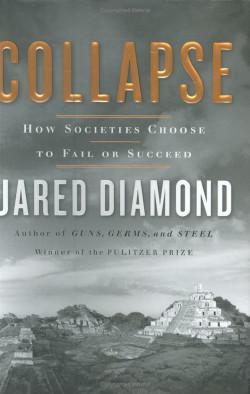
Collapse
by
Jared Diamond
Published 25 Apr 2011
As for terrorists, you might object that many of the political murderers, suicide bombers, and 9/11 terrorists were educated and moneyed rather than uneducated and desperate. That's true, but they still depended on a desperate society for support and toleration. Any society has its murderous fanatics; the U.S. produced its own Timothy McVeigh and its Harvard-educated Theodore Kaczinski. But well-nourished societies offering good job prospects, like the U.S., Finland, and South Korea, don't offer broad support to their fanatics. The problems of all these environmentally devastated, overpopulated, distant countries become our own problems because of globalization.

The Portable Atheist: Essential Readings for the Nonbeliever
by
Christopher Hitchens
Published 14 Jun 2007
Here is Susan Sontag’s “posthumous irony” indeed, as medieval Europe recreated itself in the form of a charismatic man, a messiah, a messenger of God, the bearer of the perfect truth, who exercised sexual power over his female followers and persuaded them to bear his children in order to begin a “Davidian” line. In that grim inferno, children, their mothers, and other followers died. Even more died two years later when Timothy McVeigh, exacting revenge against the government for its attack on Waco, committed his slaughter in Oklahoma City. It is not for nothing that one of the symptoms in a developing psychosis, noted and described by psychiatrists, is “religiosity.” Have we really reached a stage in public affairs when it really is no longer too obvious to say that all the evidence of the past and all the promptings of our precious rationality suggest that our future is not fixed?
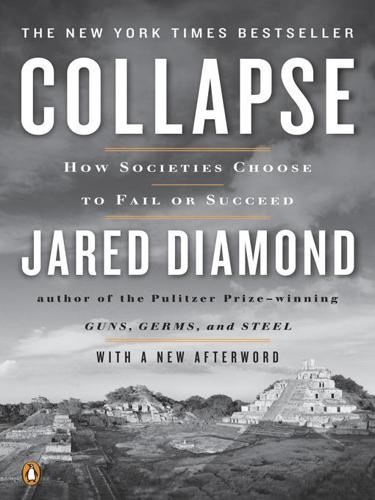
Collapse: How Societies Choose to Fail or Succeed
by
Jared Diamond
Published 2 Jan 2008
As for terrorists, you might object that many of the political murderers, suicide bombers, and 9/11 terrorists were educated and moneyed rather than uneducated and desperate. That’s true, but they still depended on a desperate society for support and toleration. Any society has its murderous fanatics; the U.S. produced its own Timothy McVeigh and its Harvard-educated Theodore Kaczinski. But well-nourished societies offering good job prospects, like the U.S., Finland, and South Korea, don’t offer broad support to their fanatics. The problems of all these environmentally devastated, overpopulated, distant countries become our own problems because of globalization.
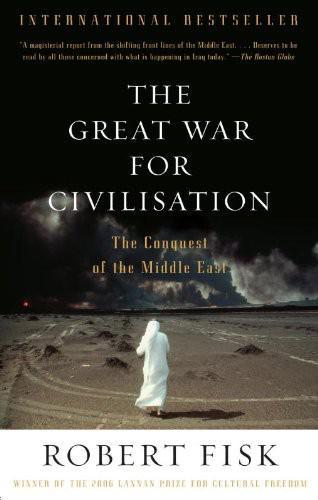
The Great War for Civilisation: The Conquest of the Middle East
by
Robert Fisk
Published 2 Jan 2005
Later, perhaps because they attacked the world’s only superpower so ferociously, we gifted them with the title of “insurgents.” 144 Among the many thousands of Americans who were decorated for their role in the Kuwait liberation was a young gunner on a Bradley fighting vehicle who received the Bronze Star and several other medals. Timothy McVeigh, a promising young soldier, then tried to join the U.S. Special Forces, but dropped out and left the army embittered on 31 December 1991. He was executed on 11 June 2001 for the 19 April 1995 Oklahoma City bombing, which killed 167 Americans. 145 As so often, American “intelligence sources” had contributed to this mind-set.
…
Chapter Sixteen: Betrayal 646 “Rise to save the homeland”: See Middle East Reporter (Beirut), 25 February 1991, p. 4, “Iraqis Urged to Revolt, Save Country from Dictatorship, War.” 647 the Iraqis had tried to jam: See Middle East Reporter (Beirut), 4 January 1991, “Anti-Saddam Radio Believed Jammed.” 647 “the allies to liberate Iraq”: Interview with Haidar al-Assadi, Beirut, 3 May 1998. 649 Iraqi dead at up to 150,000: Middle East Reporter (Beirut), 1 March 1991. 649 had claimed that 26,000 Iraqis: Jumhouri-y Islami (Tehran), 19 February 1991, cited by Dilip Hiro in letter to The Independent, 8 February 1992. 649 When a Pentagon source: Newsday, 12 September 1991, cited by Hiro, as above. 650 dropped nearly as many tons: International Herald Tribune, 10 July 1996, quoting New York Times article by Tim Weiner, “Smart Arms in Gulf War Are Found Overrated.” 650 “35—almost one-quarter”: Associated Press report from Washington, 13 August 1991, “Gulf Friendly Fire Casualties Rise,” by Susanne M. Chafer. 650 The independent U.S. General Accounting Office: See International Herald Tribune, 10 July 1996, op. cit. 650 In fact, as Seymour Hersh: New Yorker, 26 September 1994, pp. 86–99, “Missile Wars,” by Seymour Hersh, esp. p. 92. (n.) 650 Timothy McVeigh, a promising young soldier: Reuters report in Irish Times, 3 June 1997. 652 All of this I duly reported: See Independent, 27 March 1991. (n.) 652 Other testimony to Kuwaiti persecution: See, for example, Libération, 20 March 1991, “La grande peur des Palestiniens du Kuweit,” by Jean Michel Thénard. 657 The refugees who now streamed: See Guardian, 14 March 1991, “Rebels ‘hanged from tank gun barrels’ by Saddam’s men,” by Sharif Imam-Jomeh (Reuters) and Nora Boustany (Washington Post). 658 “Better the Saddam Hussein”: Guardian, 13 March 1991, “Britain and U.S. part over Iraqi rebels,” by Hella Pick. 661 would be compared to the Soviet demands: See, for example, Independent , 28 March 1991, “Fiddling while Basra burns,” by Godfrey Hodgson. 663 “What’s the better option”: International Herald Tribune , 23 March 1991, quoting Washington Post report by Dan Balz and Al Kamen, “U.S.

Ghost Wars: The Secret History of the CIA, Afghanistan, and Bin Laden, from the Soviet Invasion to September 10, 2011
by
Steve Coll
Published 23 Feb 2004
Murad’s confession about a plan to hijack a civilian airliner and crash it into the CIA received little attention at the FBI because that plot was not part of the evidentiary case the bureau was building for courtroom prosecution. The FBI was distracted. Domestic terrorism overshadowed Islamist attacks during 1995. In April, Timothy McVeigh detonated a truck bomb outside the federal building in Oklahoma City, killing 168 and wounding hundreds more. The bombing galvanized the Clinton administration to focus on terrorism, but the long investigation drained FBI resources. The bureau never followed up with a detailed investigation of the airplane kamikaze plan.29 The CIA remained focused on Iranian and Shiite terrorist threats.
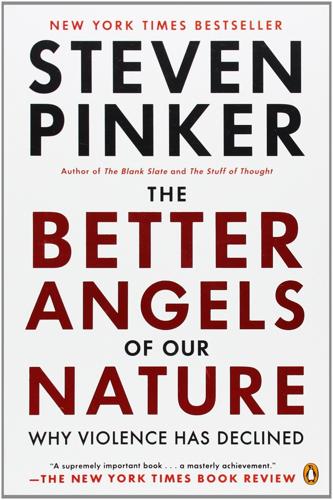
The Better Angels of Our Nature: Why Violence Has Declined
by
Steven Pinker
Published 24 Sep 2012
The nearly 3,000 deaths from the 9/11 attacks were literally off the chart—way down in the tail of the power-law distribution into which terrorist attacks fall.181 According to the Global Terrorism Database of the National Consortium for the Study of Terrorism and Responses to Terrorism (the major publicly available dataset on terrorist attacks), between 1970 and 2007 only one other terrorist attack in the entire world has killed as many as 500 people.182 In the United States, Timothy McVeigh’s bombing of a federal office building in Oklahoma City in 1995 killed 165, a shooting spree by two teenagers at Columbine High School in 1999 killed 17, and no other attack has killed as many as a dozen. Other than 9/11, the number of people killed by terrorists on American soil during these thirty-eight years was 340, and the number killed after 9/11—the date that inaugurated the so-called Age of Terror—was 11.